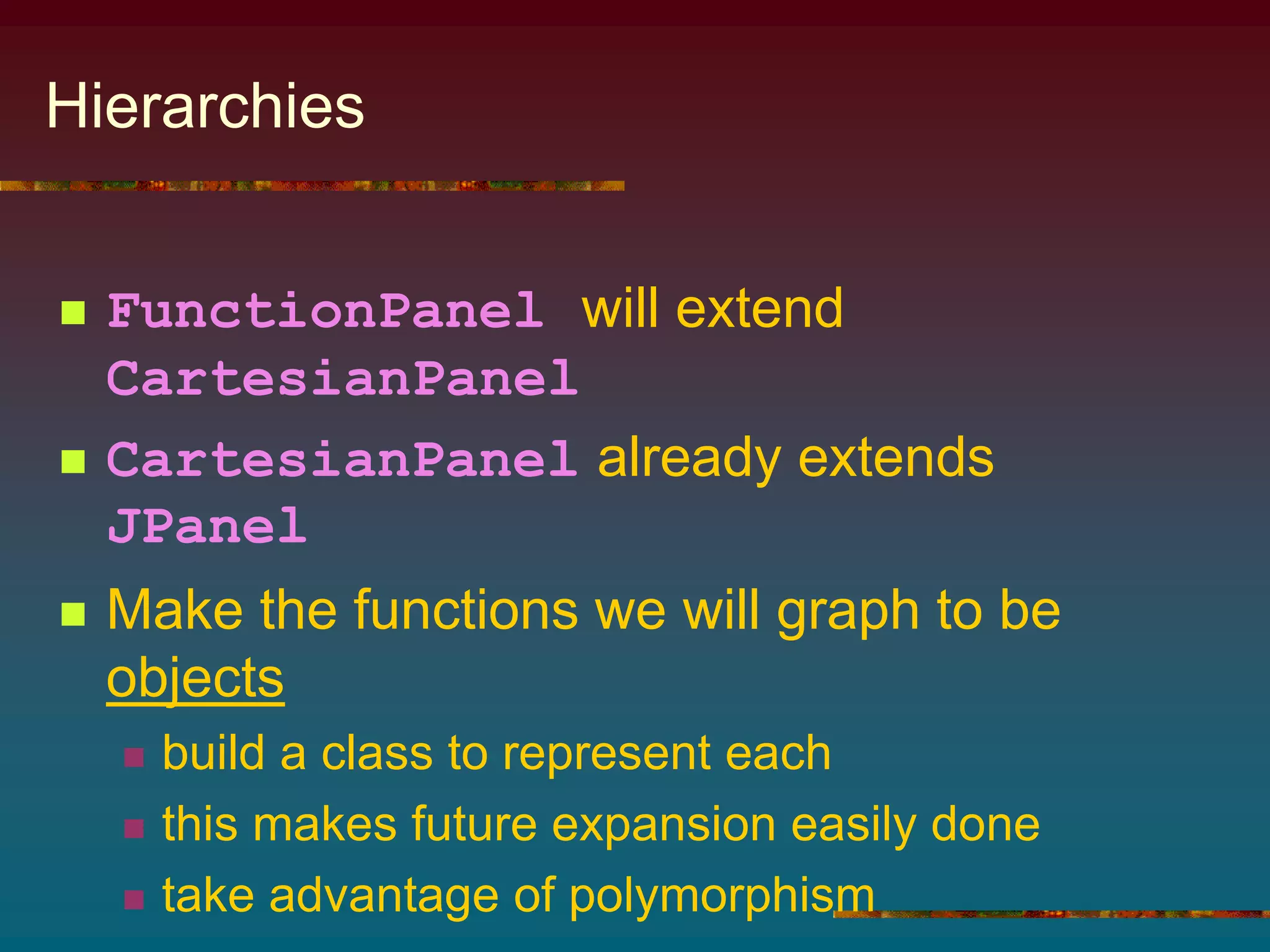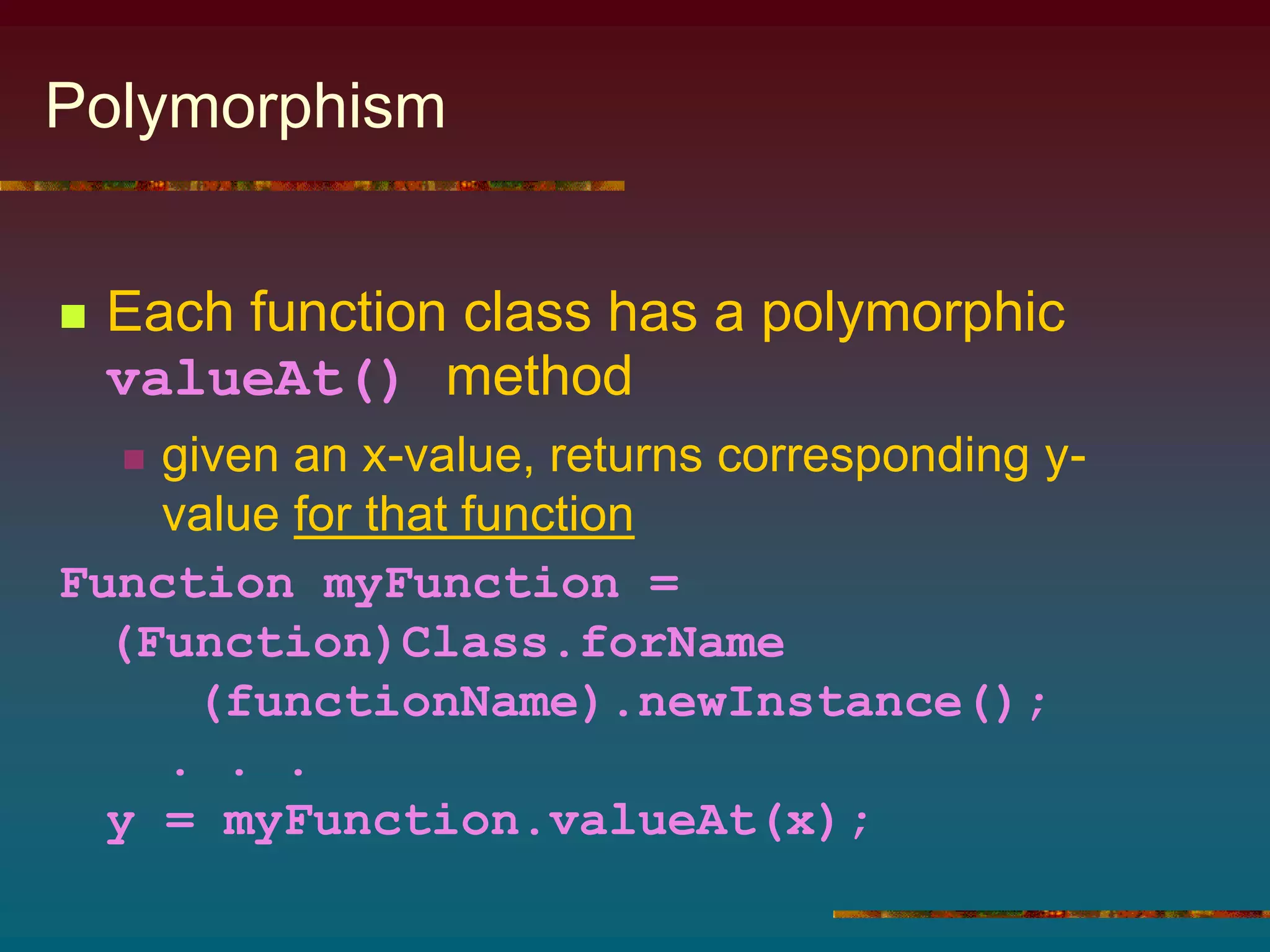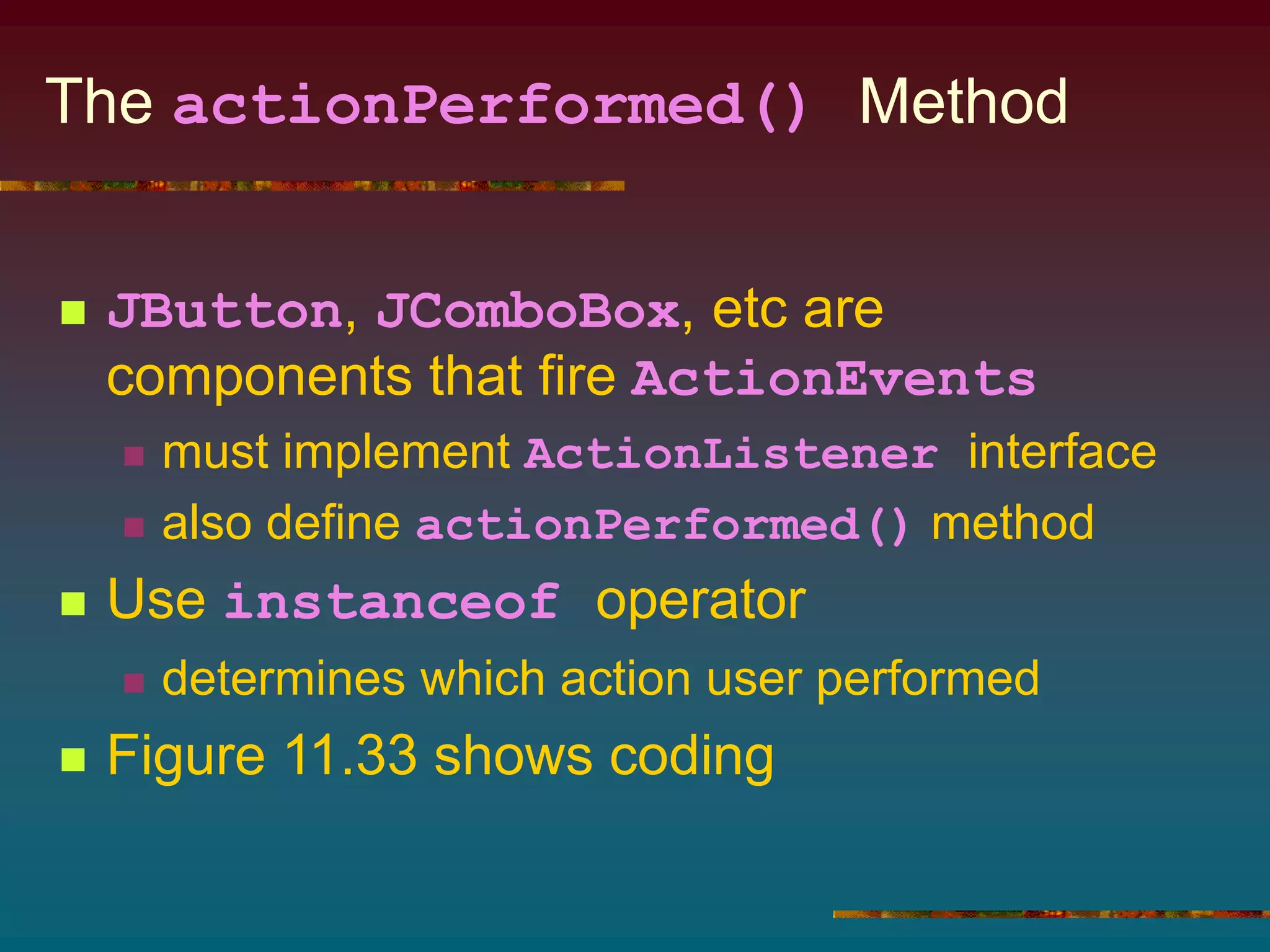This document discusses object-oriented programming concepts like inheritance, polymorphism, and class hierarchies. It uses examples like modeling different types of birds and geological rocks to illustrate these concepts. The bird example shows how to create a Bird superclass and subclasses like Parrot that inherit attributes and behaviors. Subclasses can override methods like getCall() to exhibit polymorphism. The rock example similarly uses a hierarchy with classes like IgneousRock inheriting from the Rock superclass.

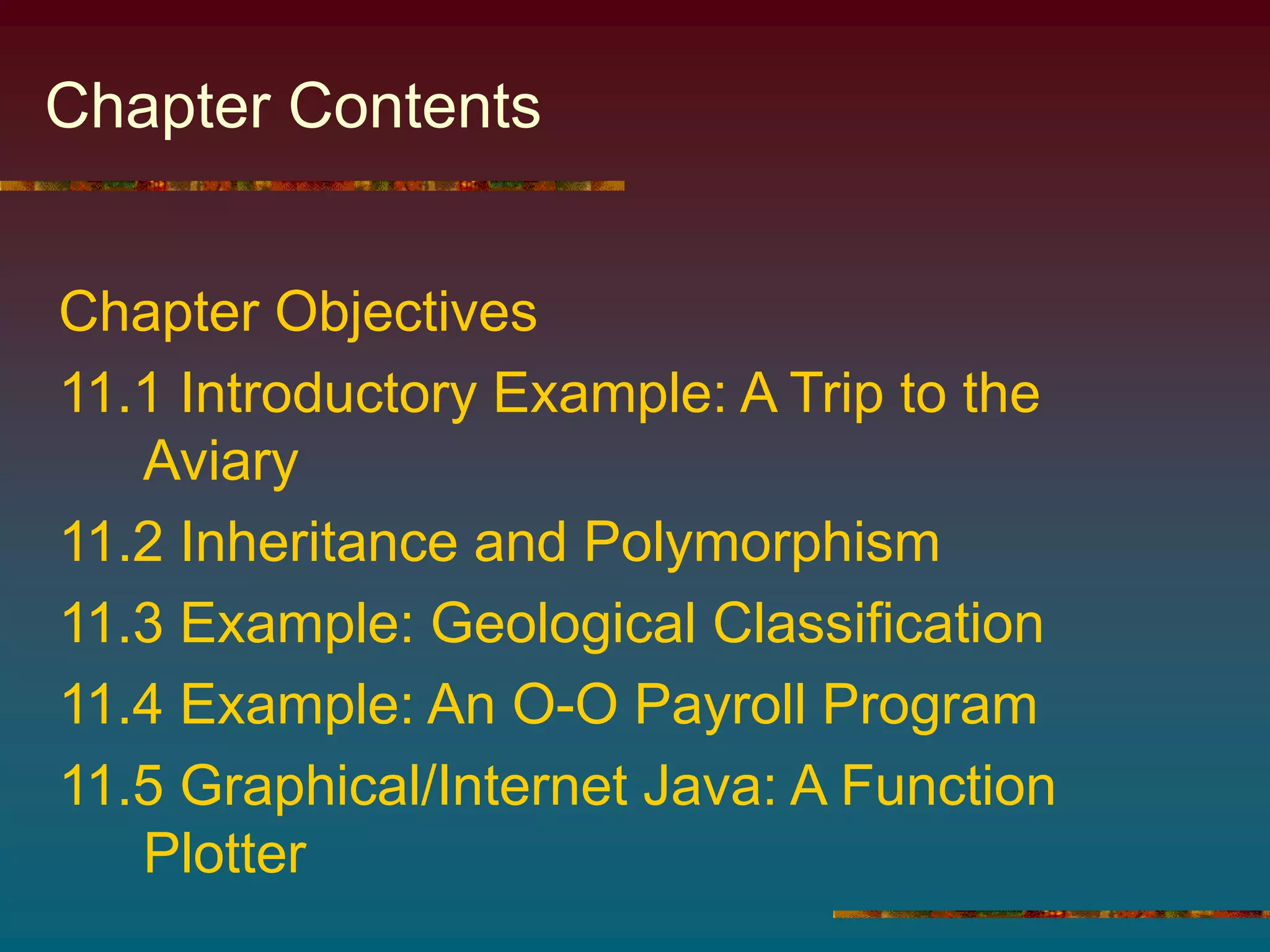
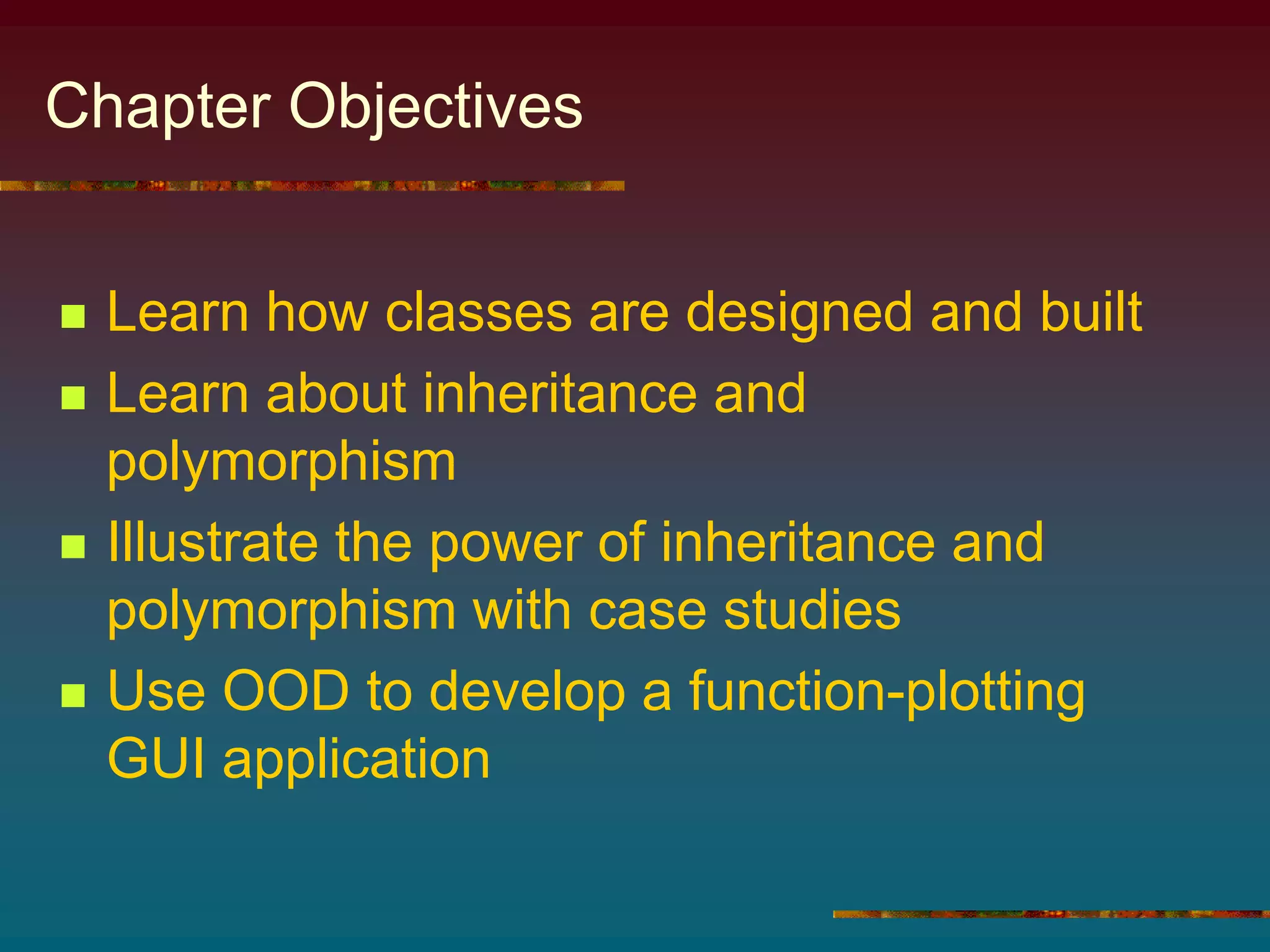
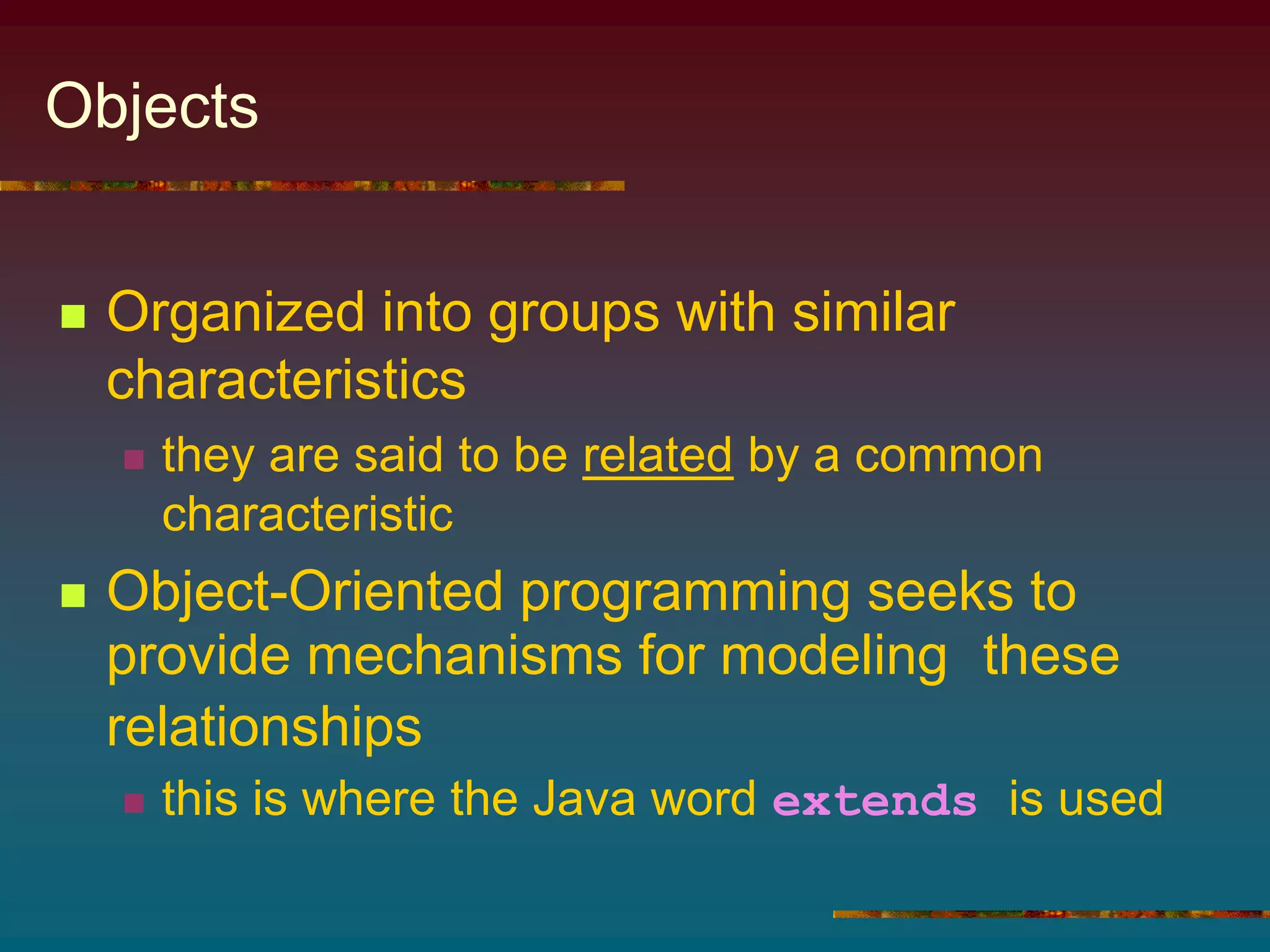
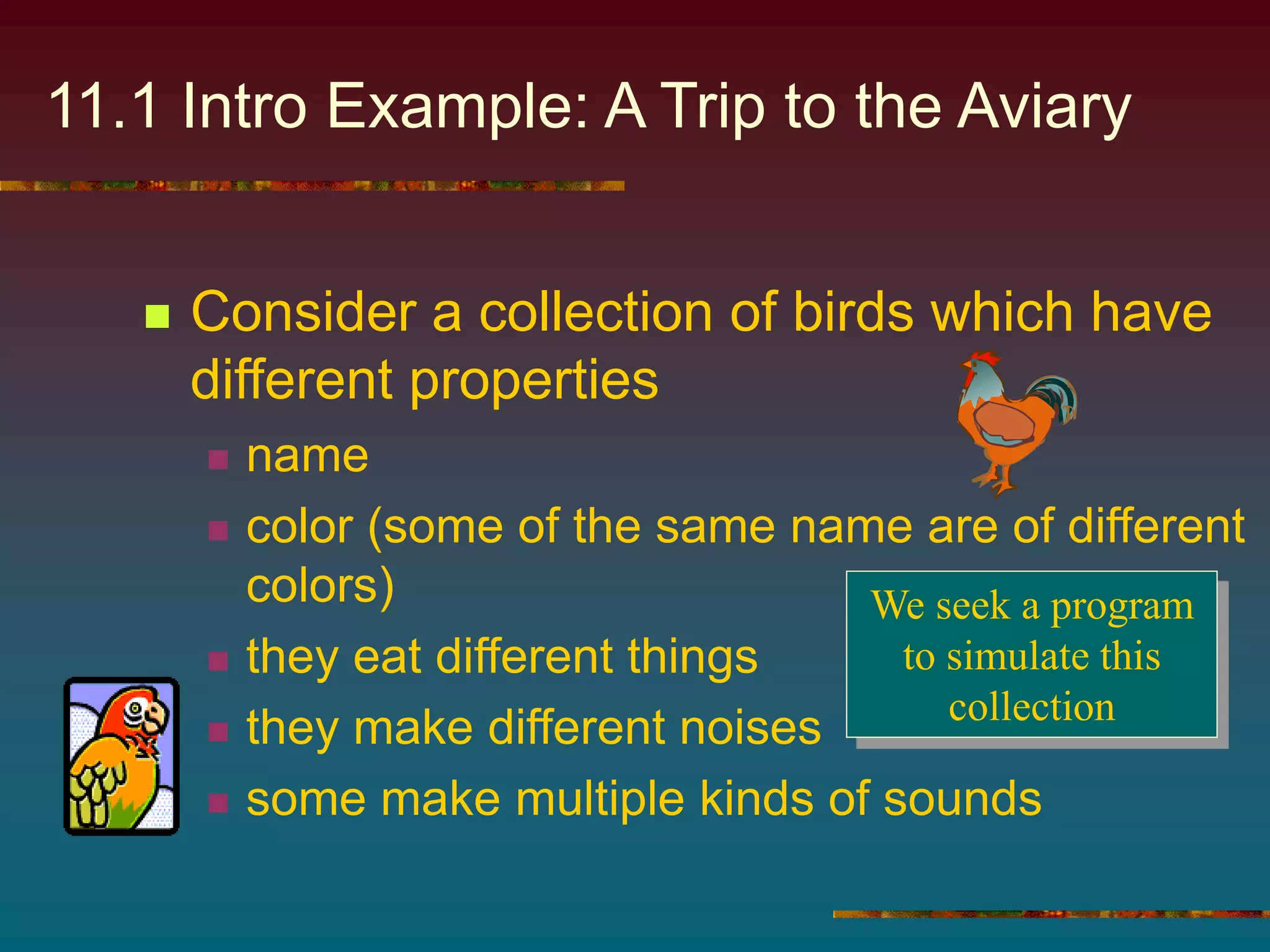
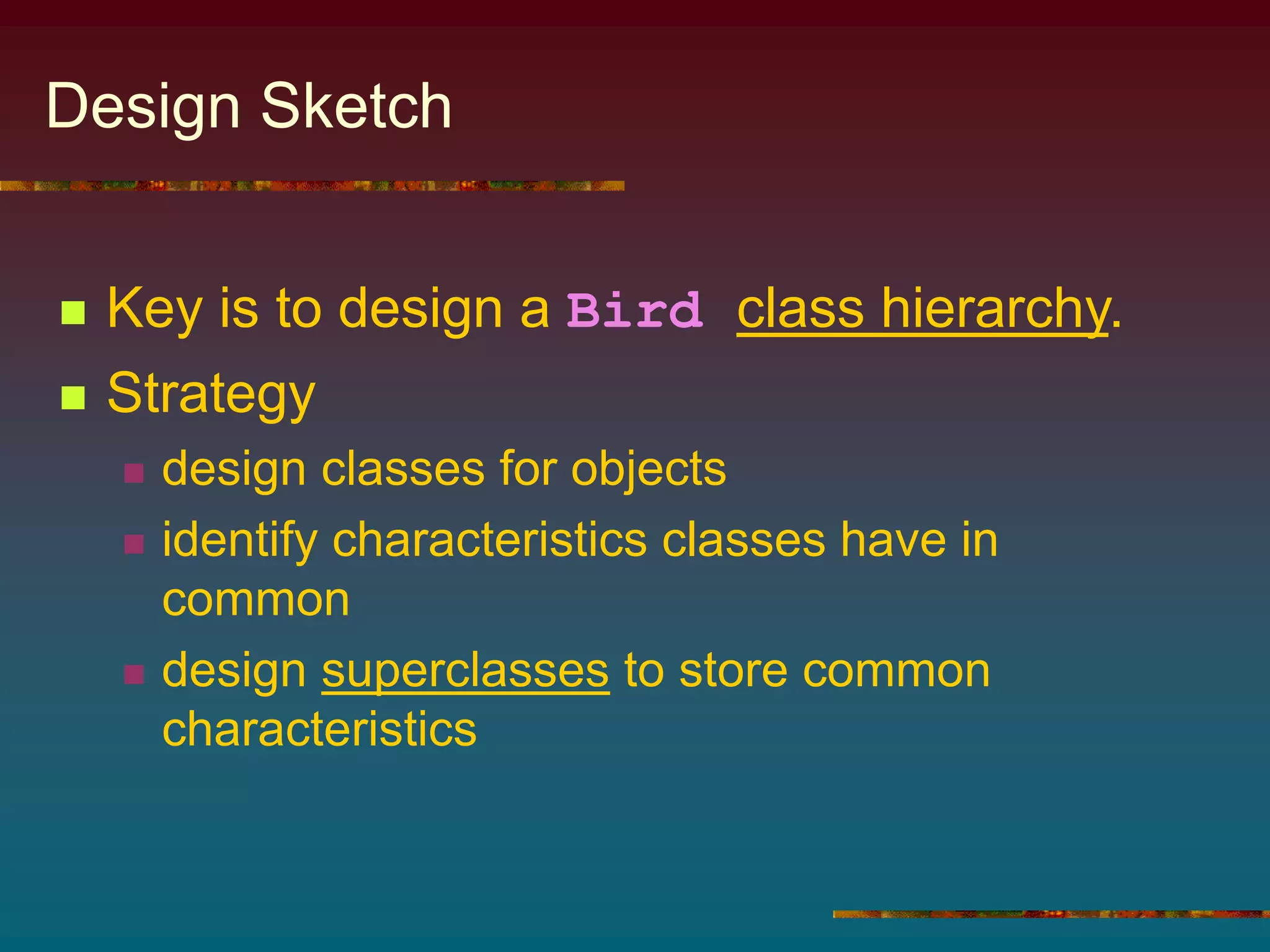
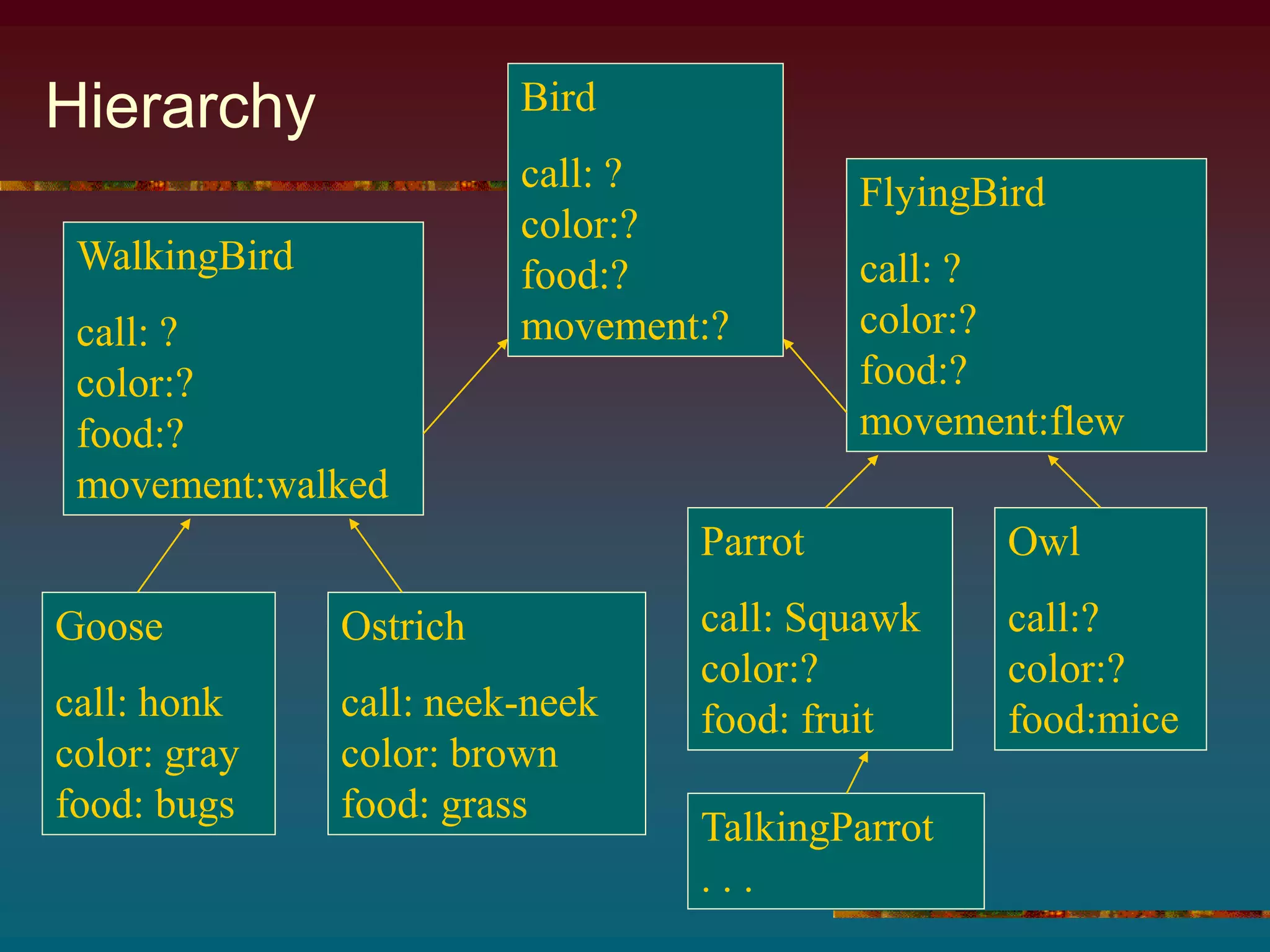
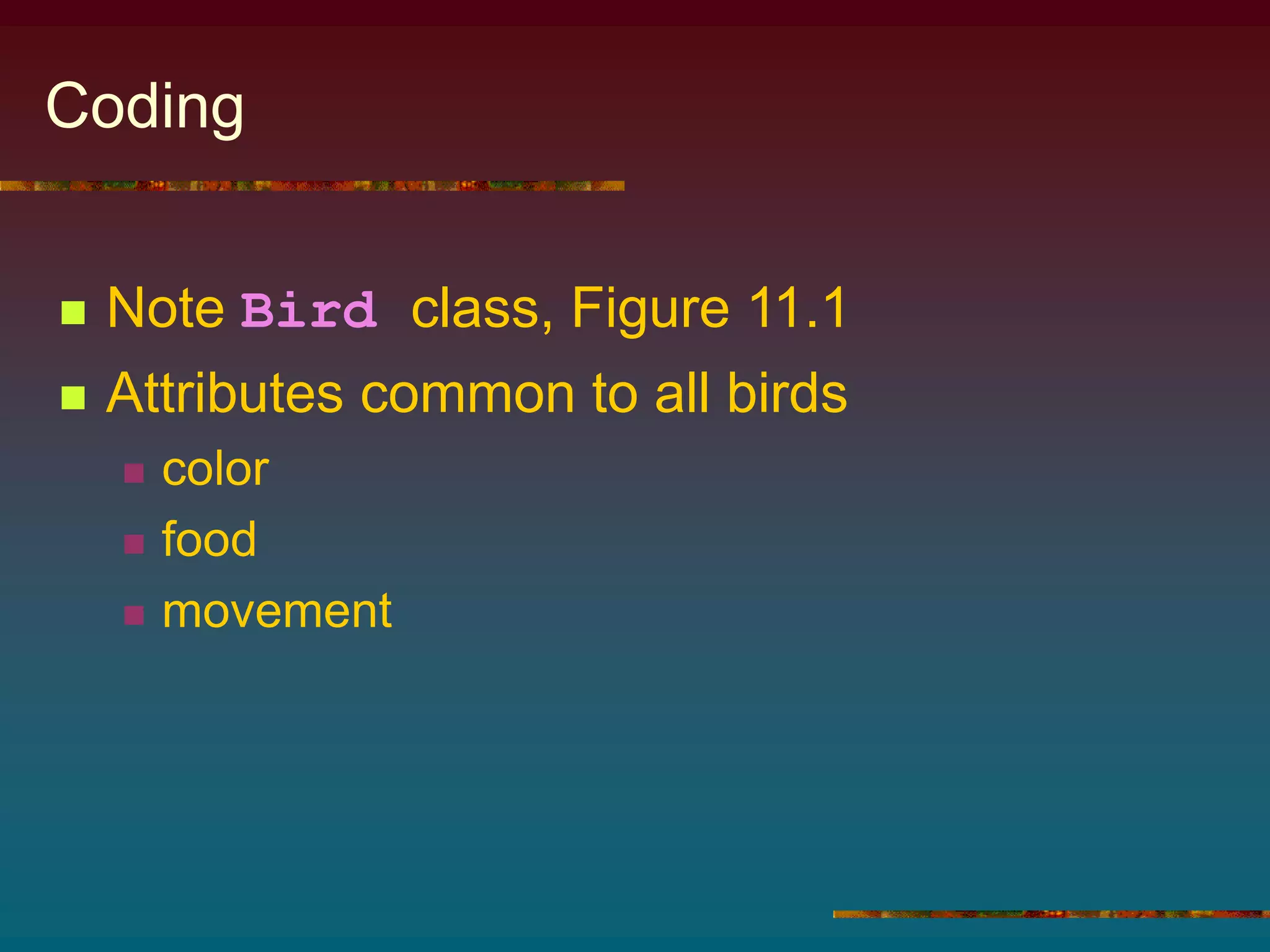

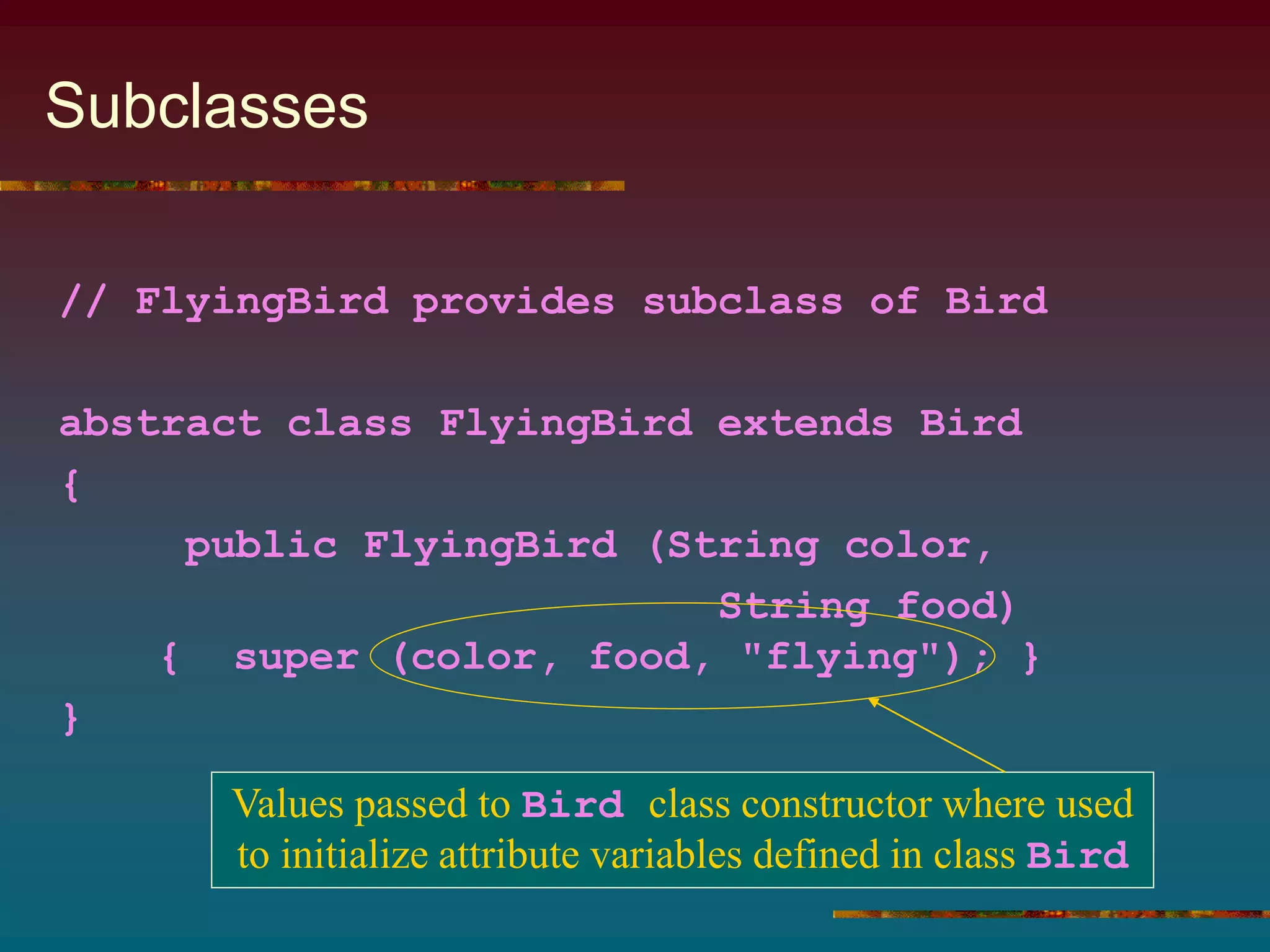

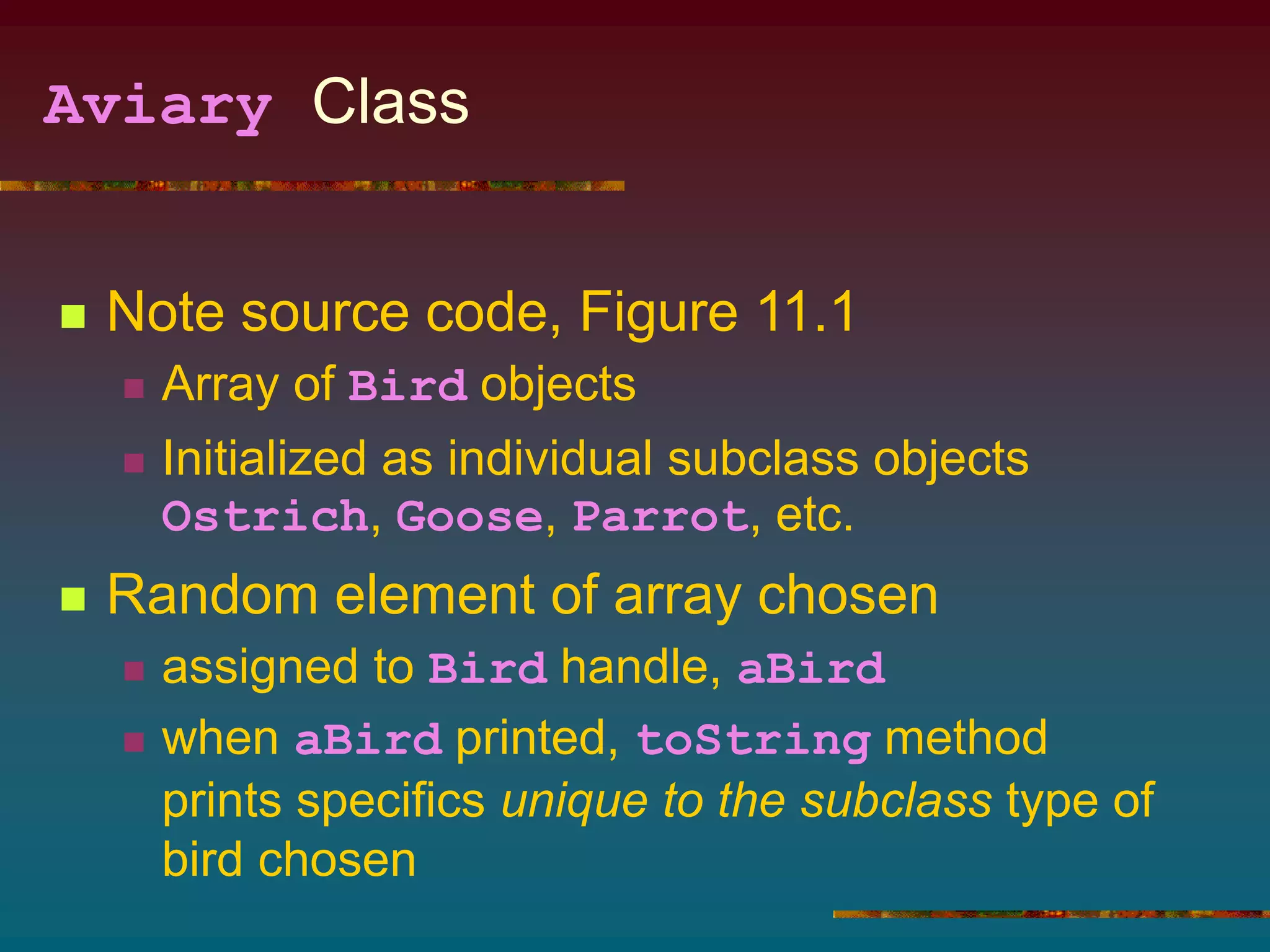
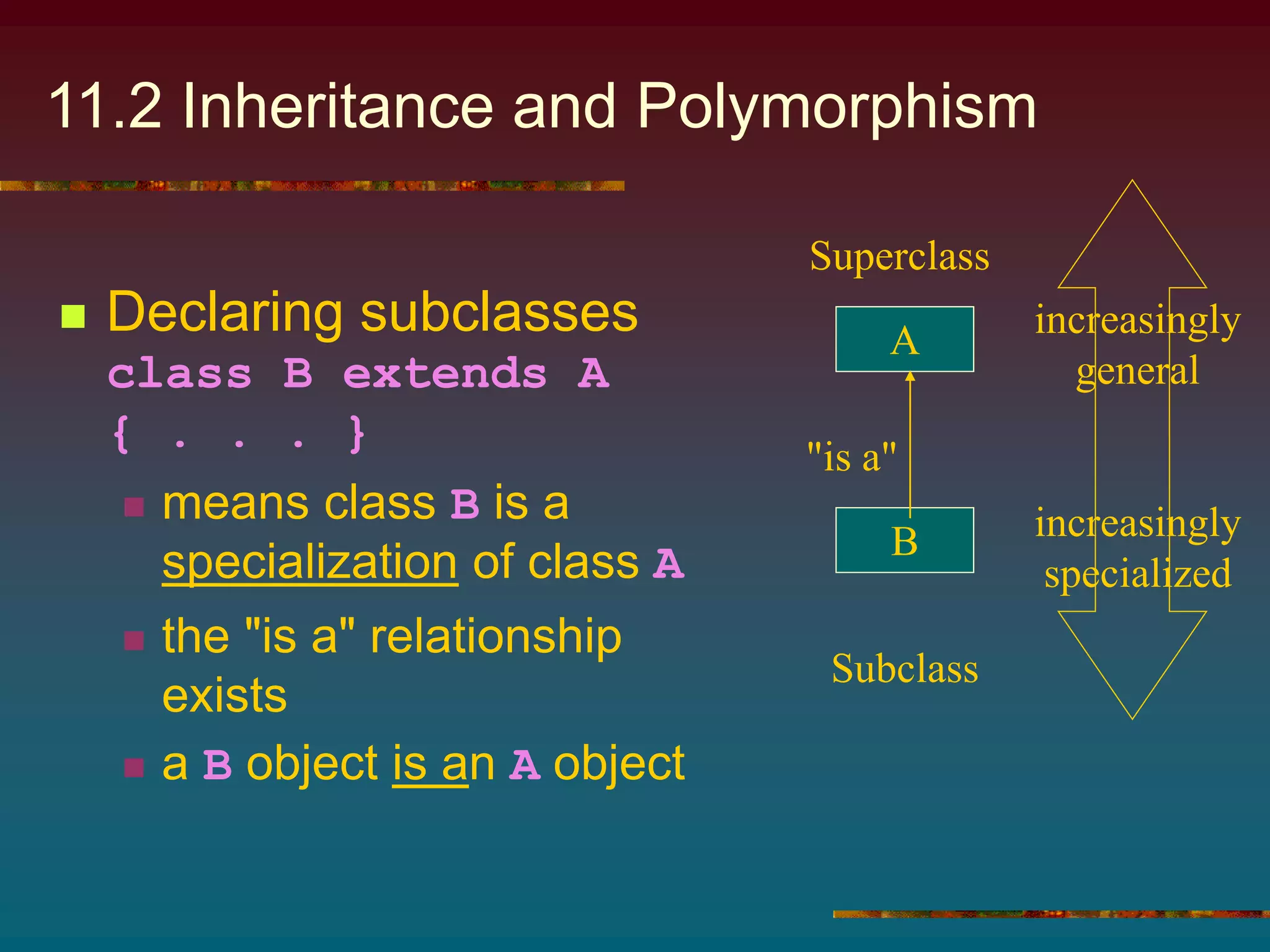
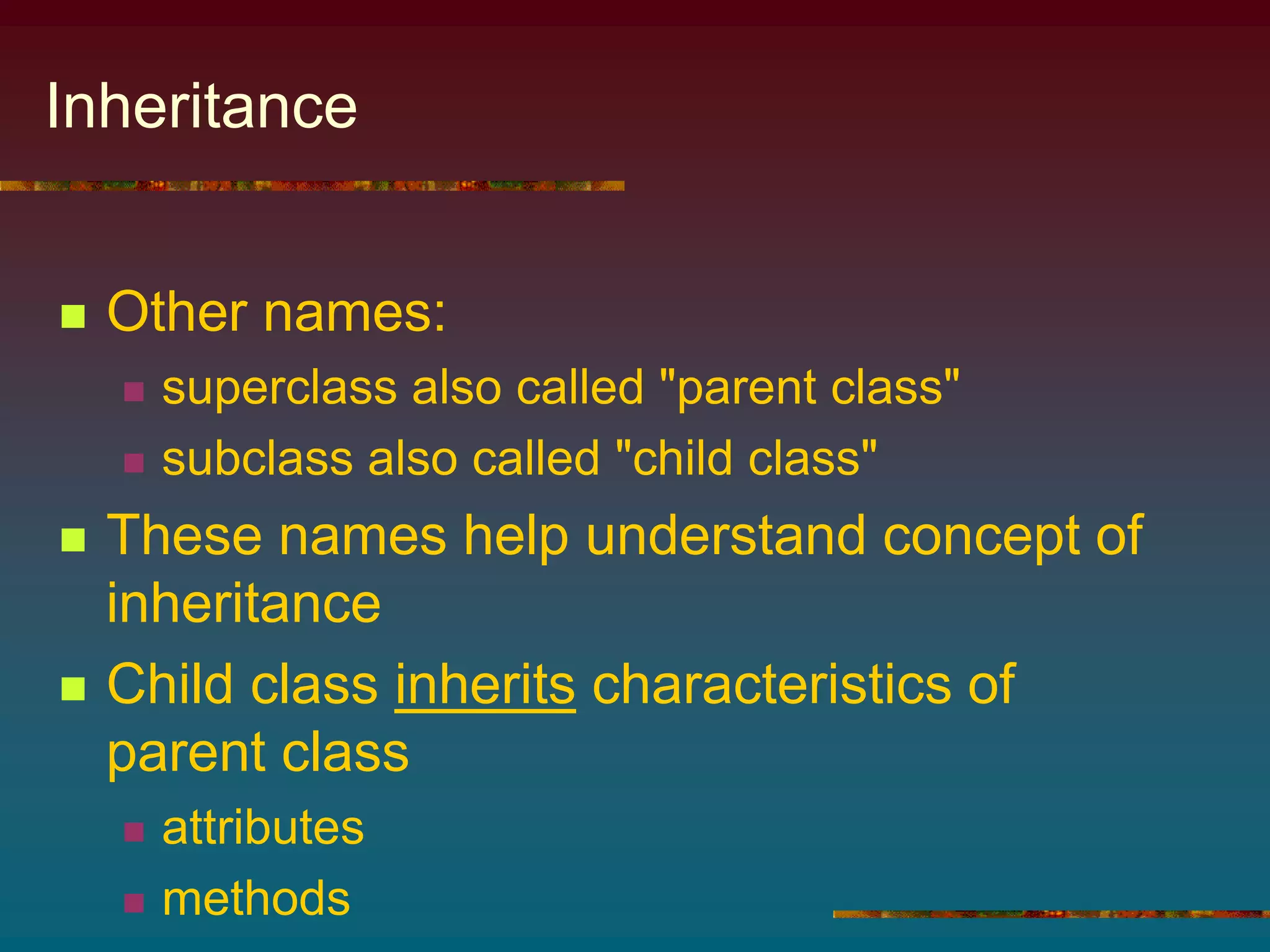

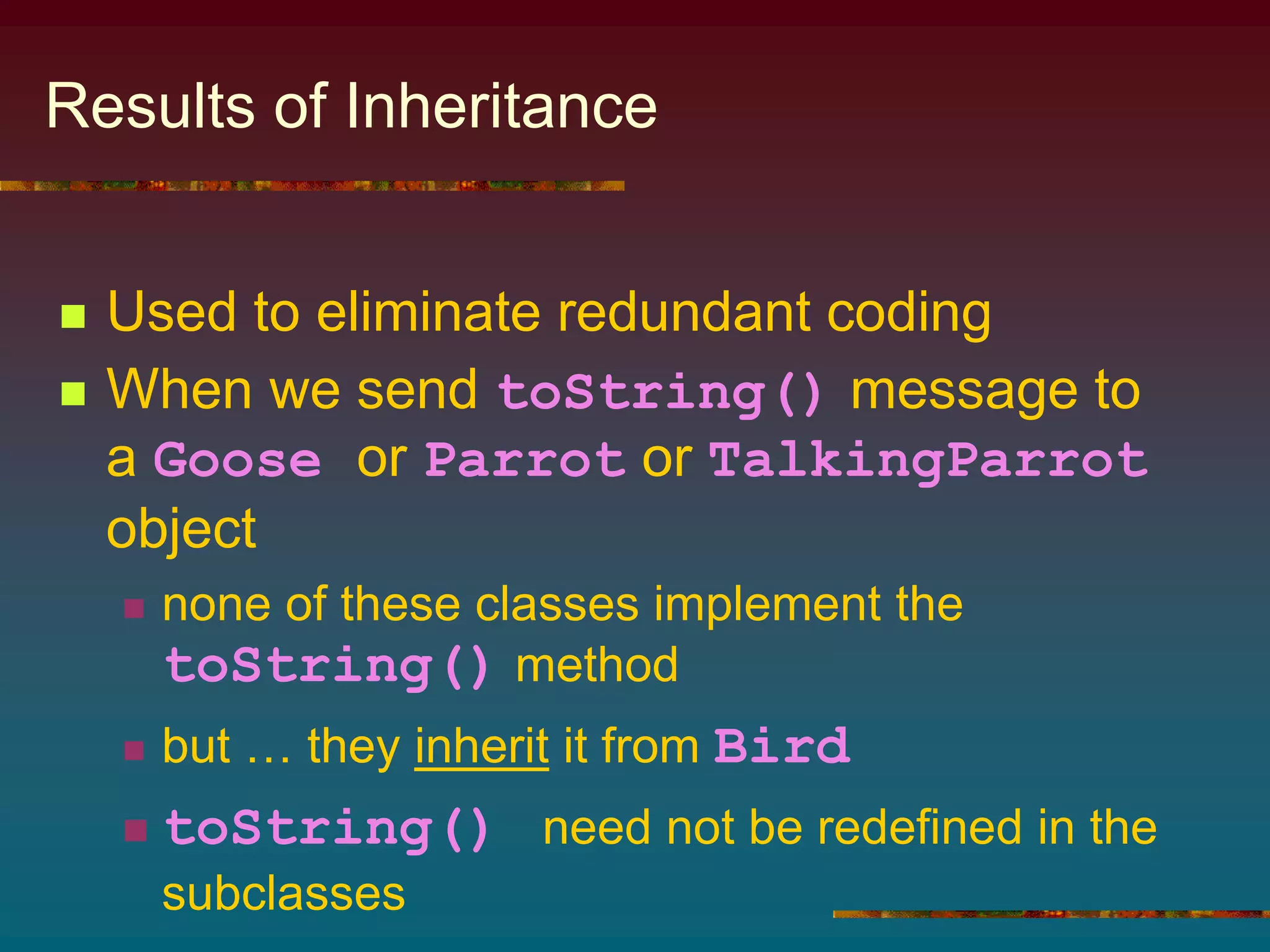
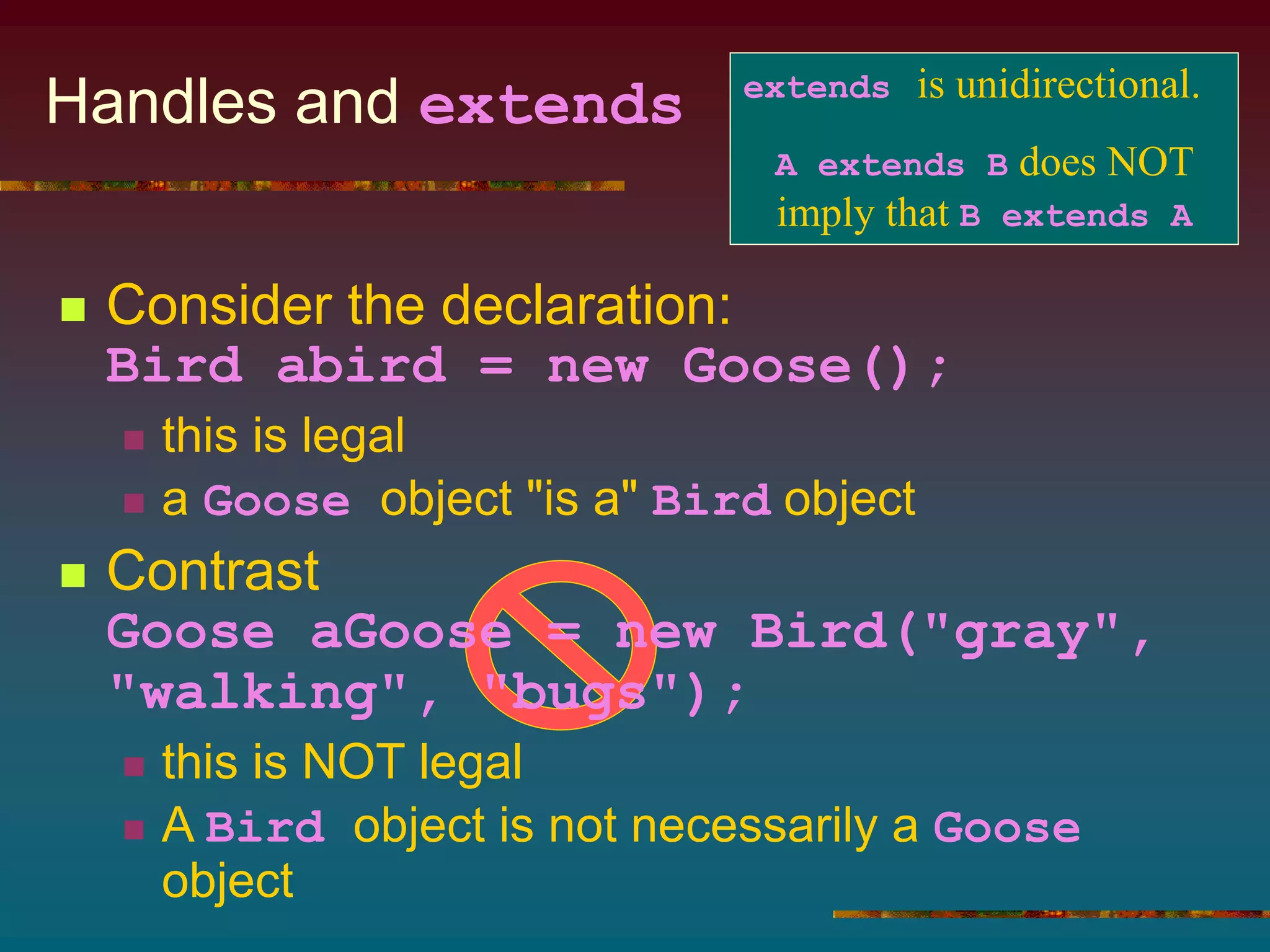
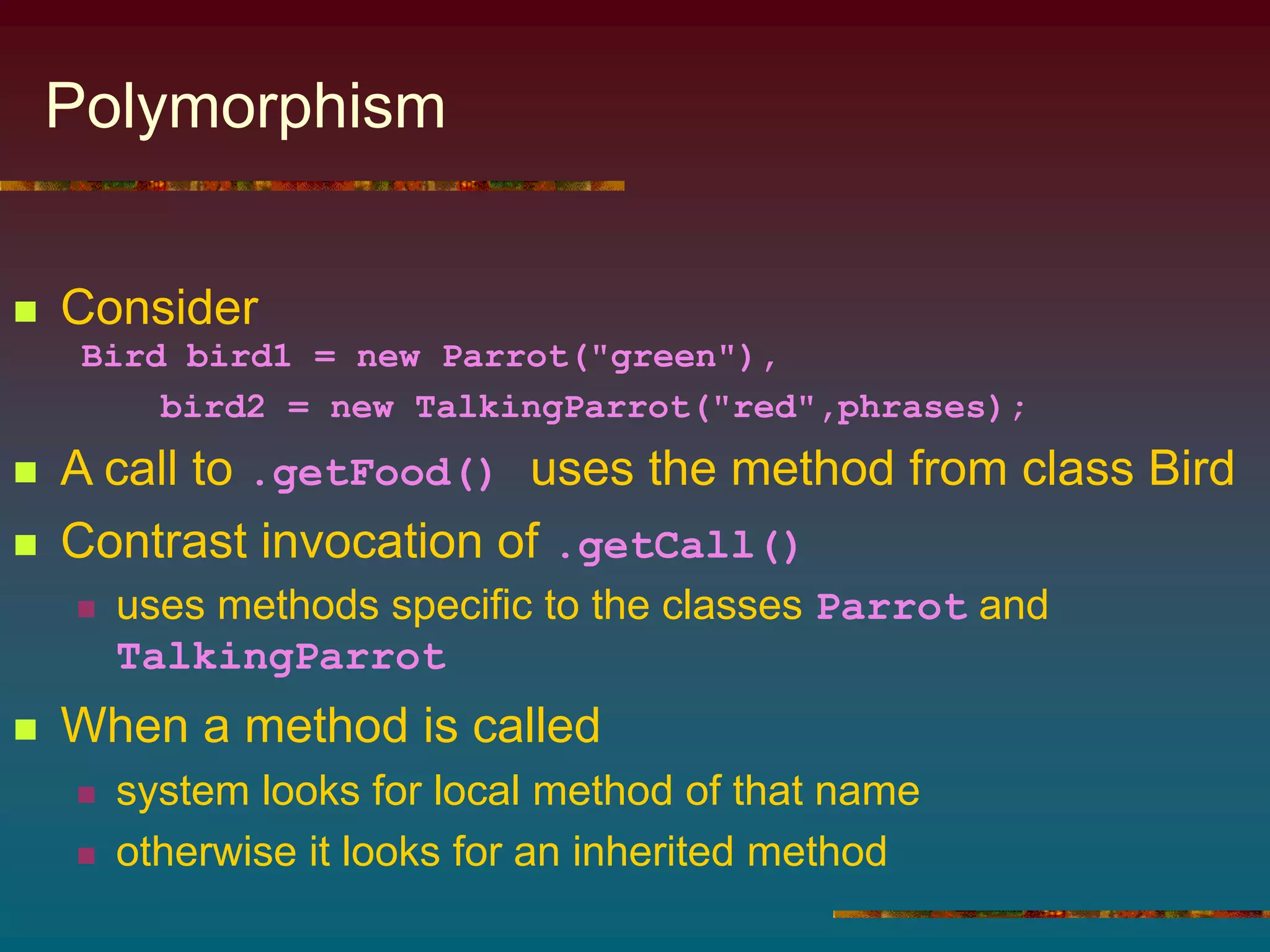
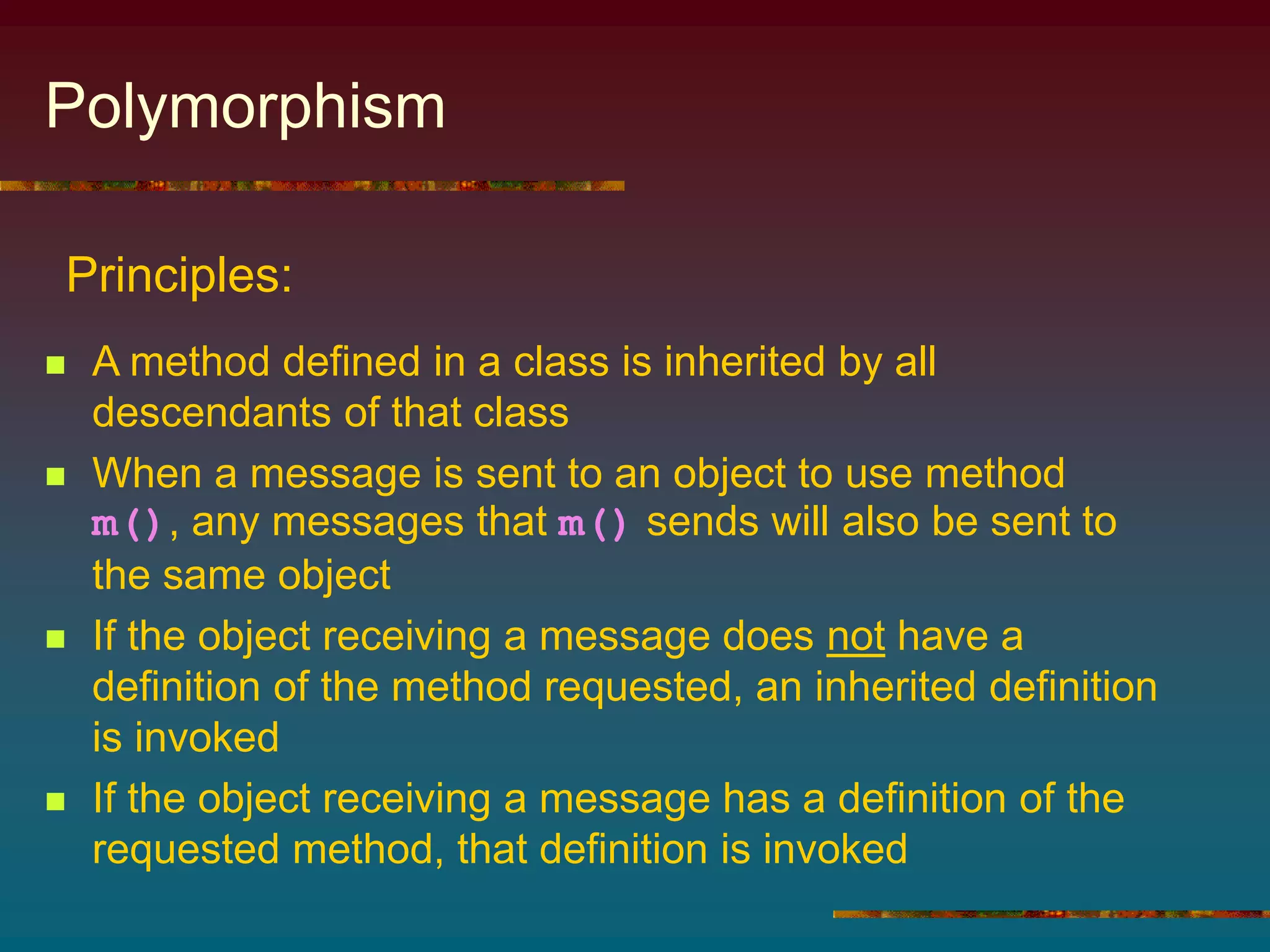
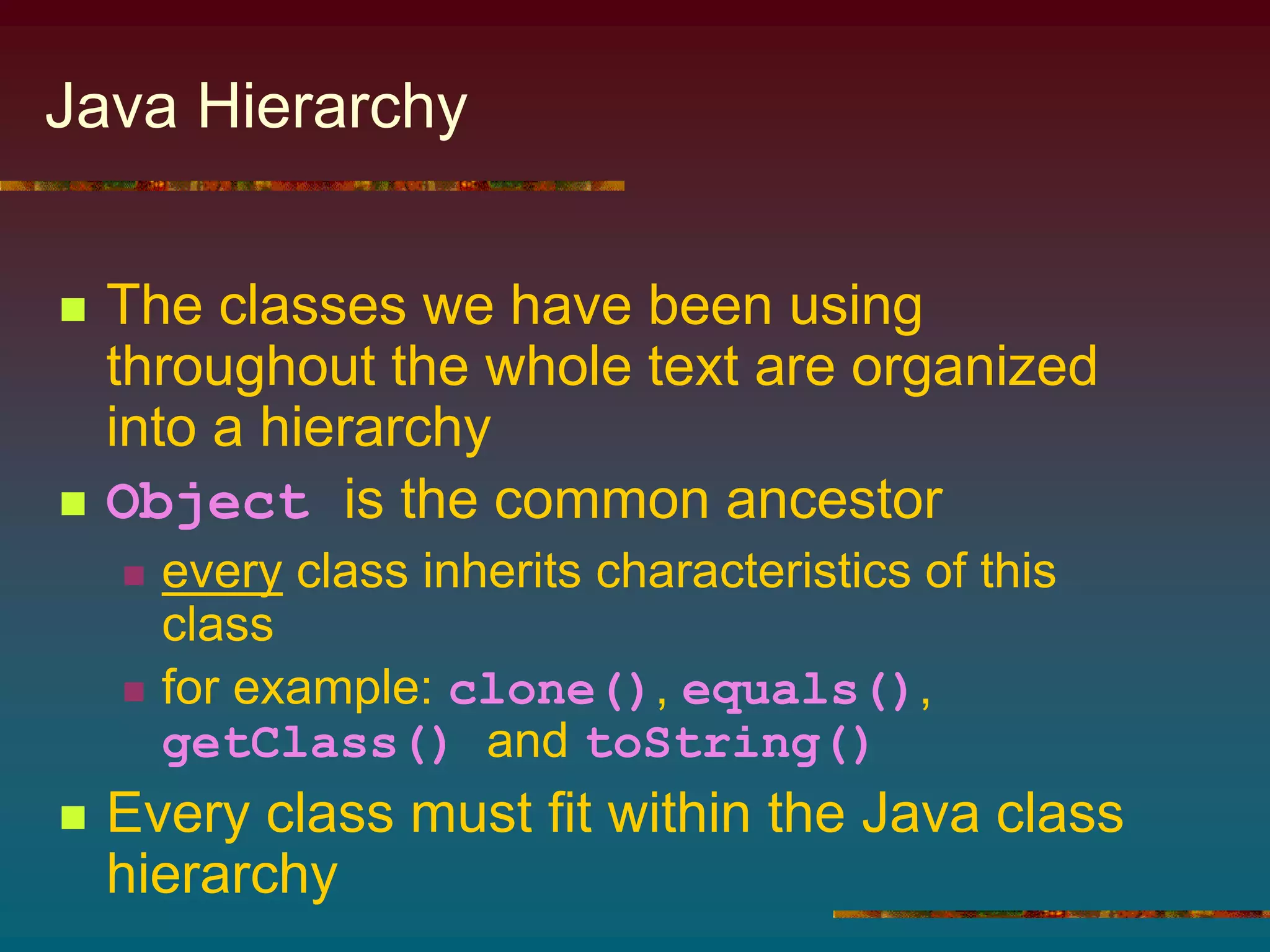

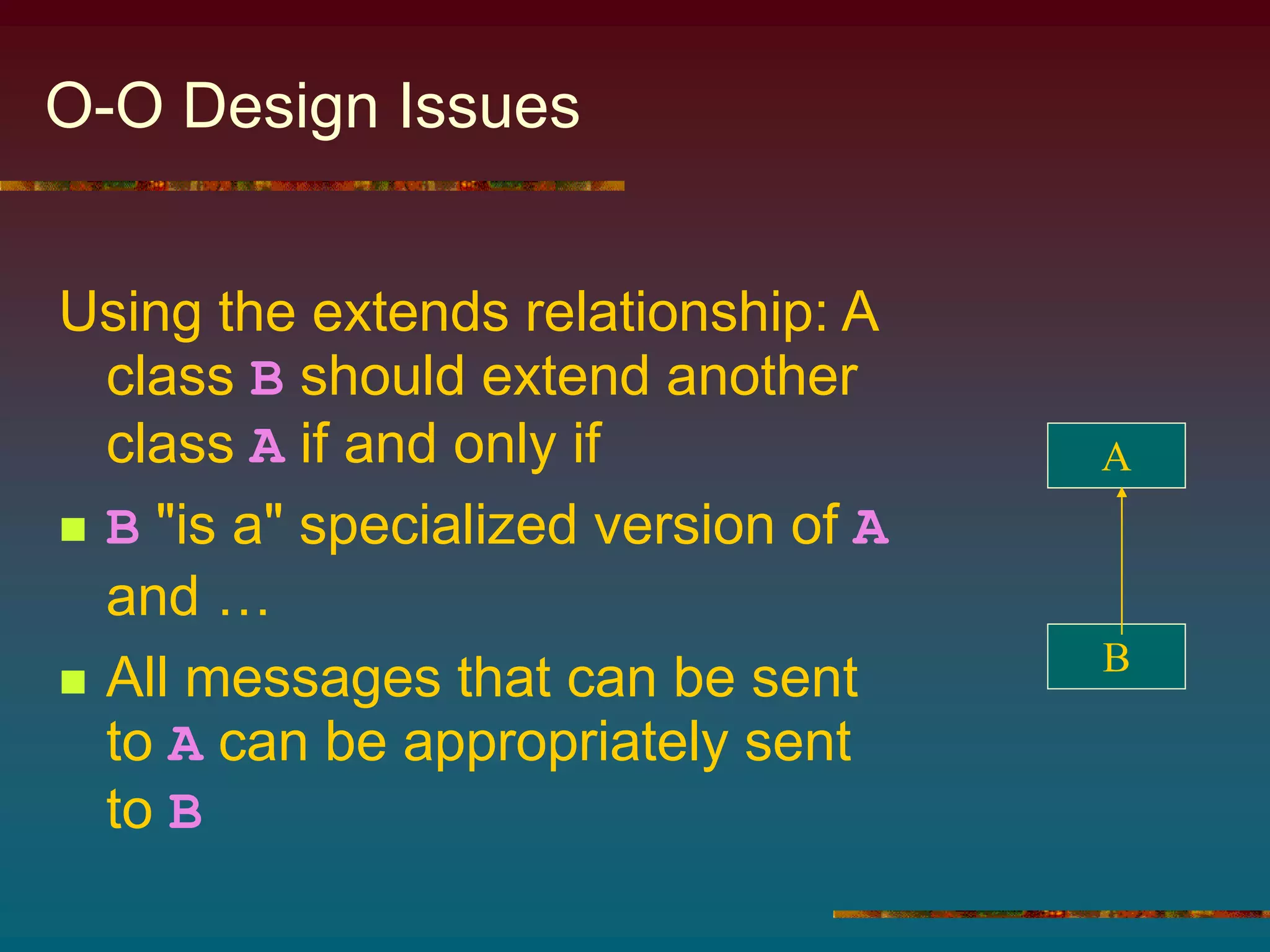
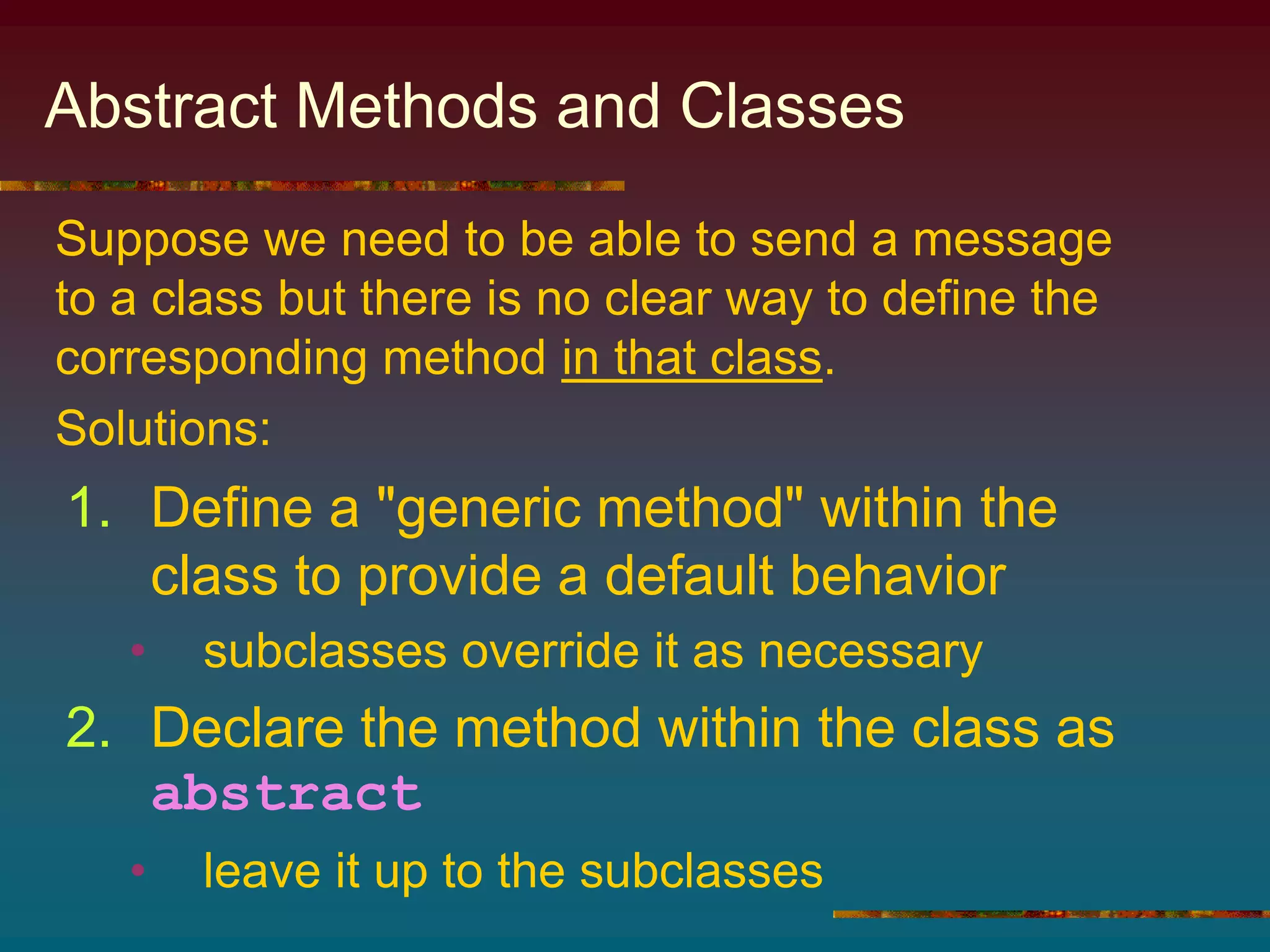
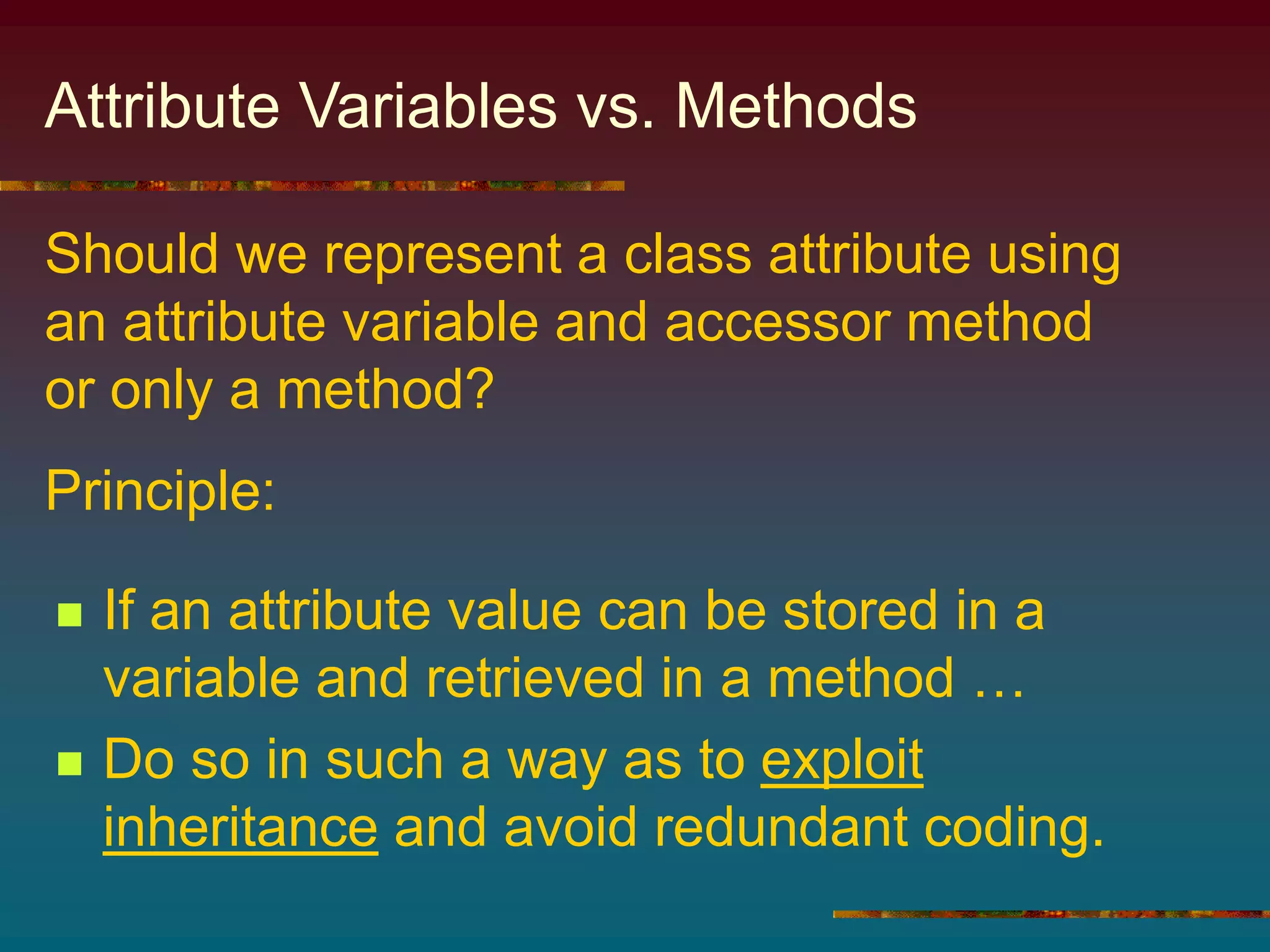
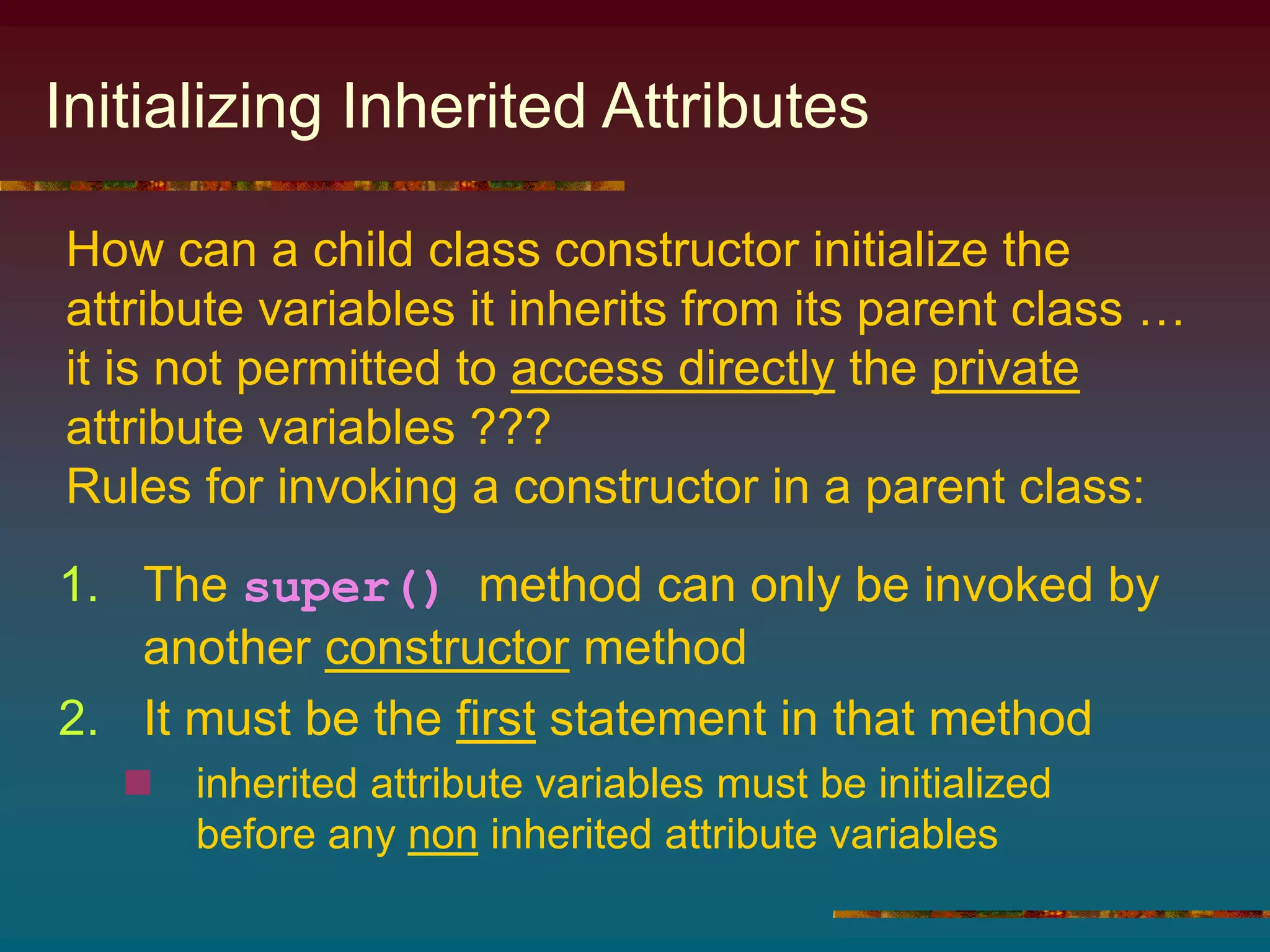

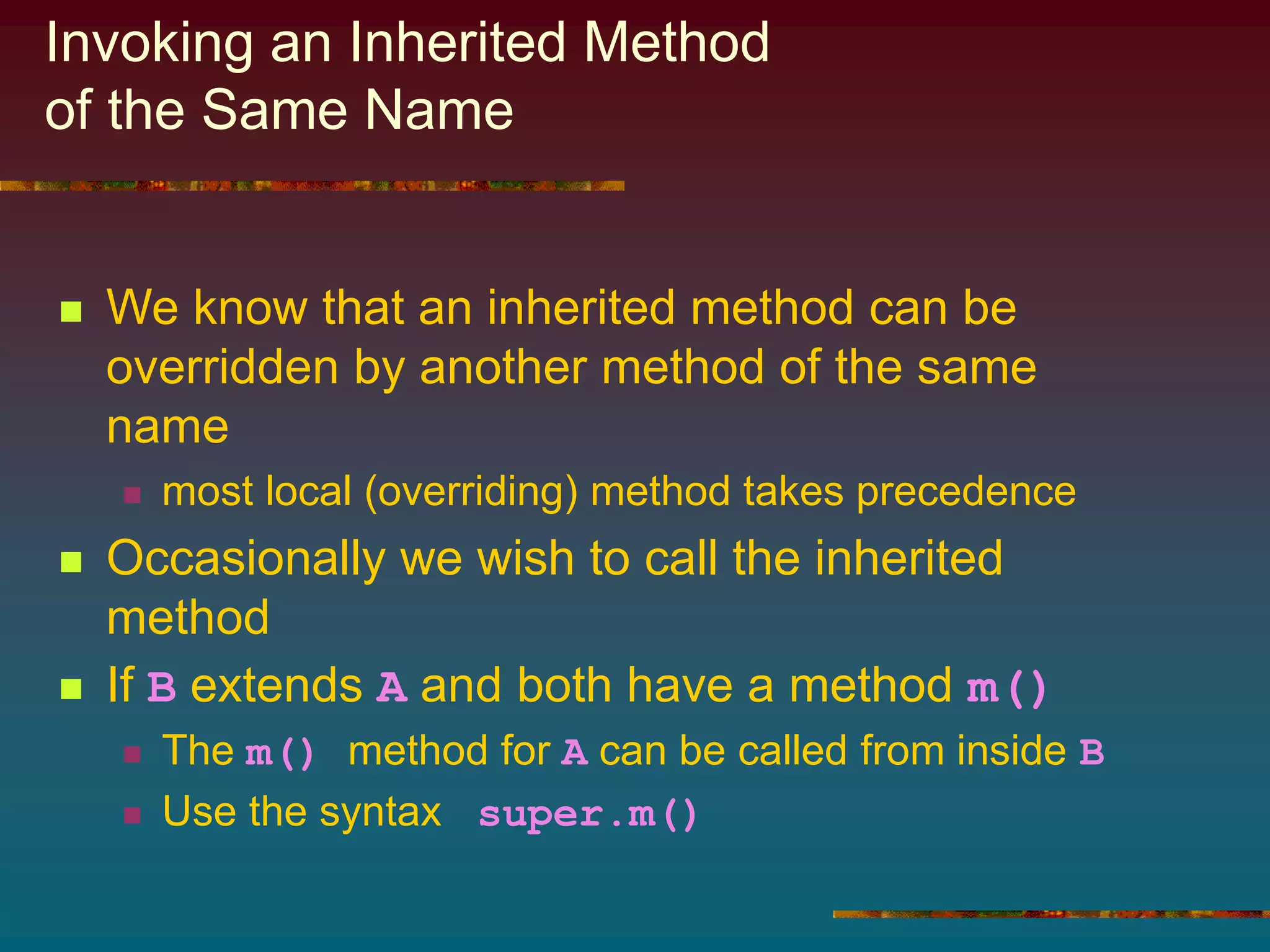
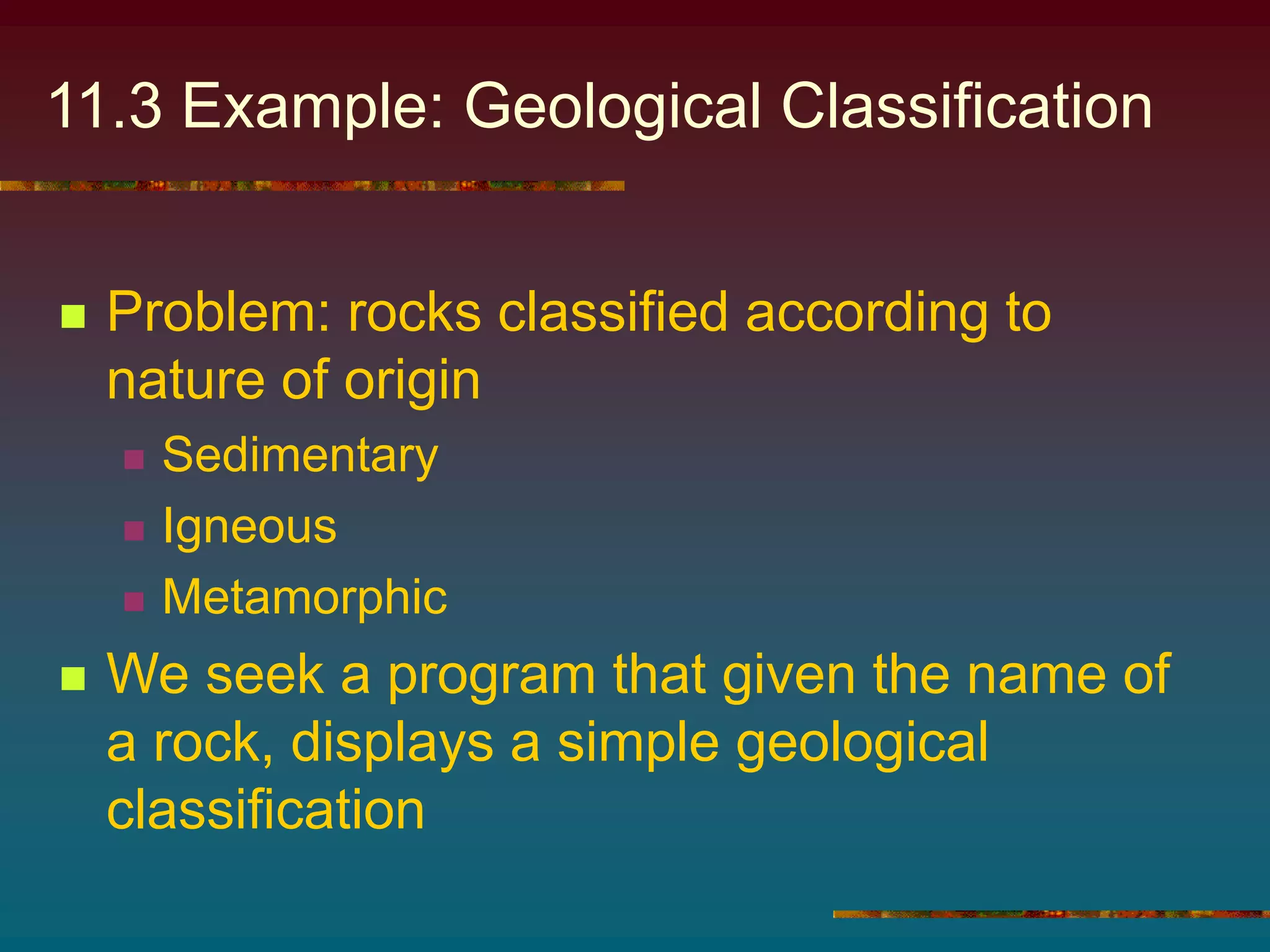

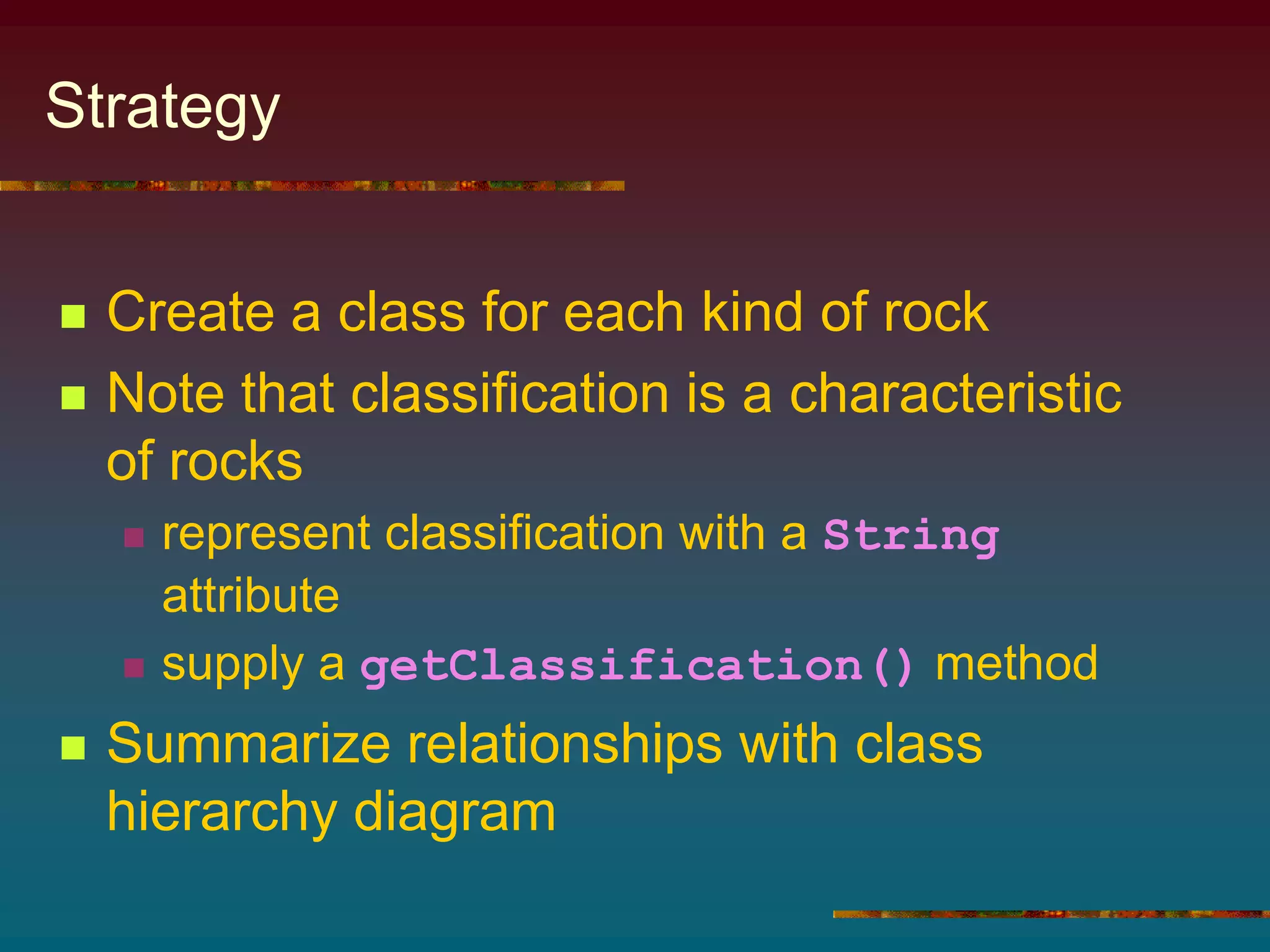

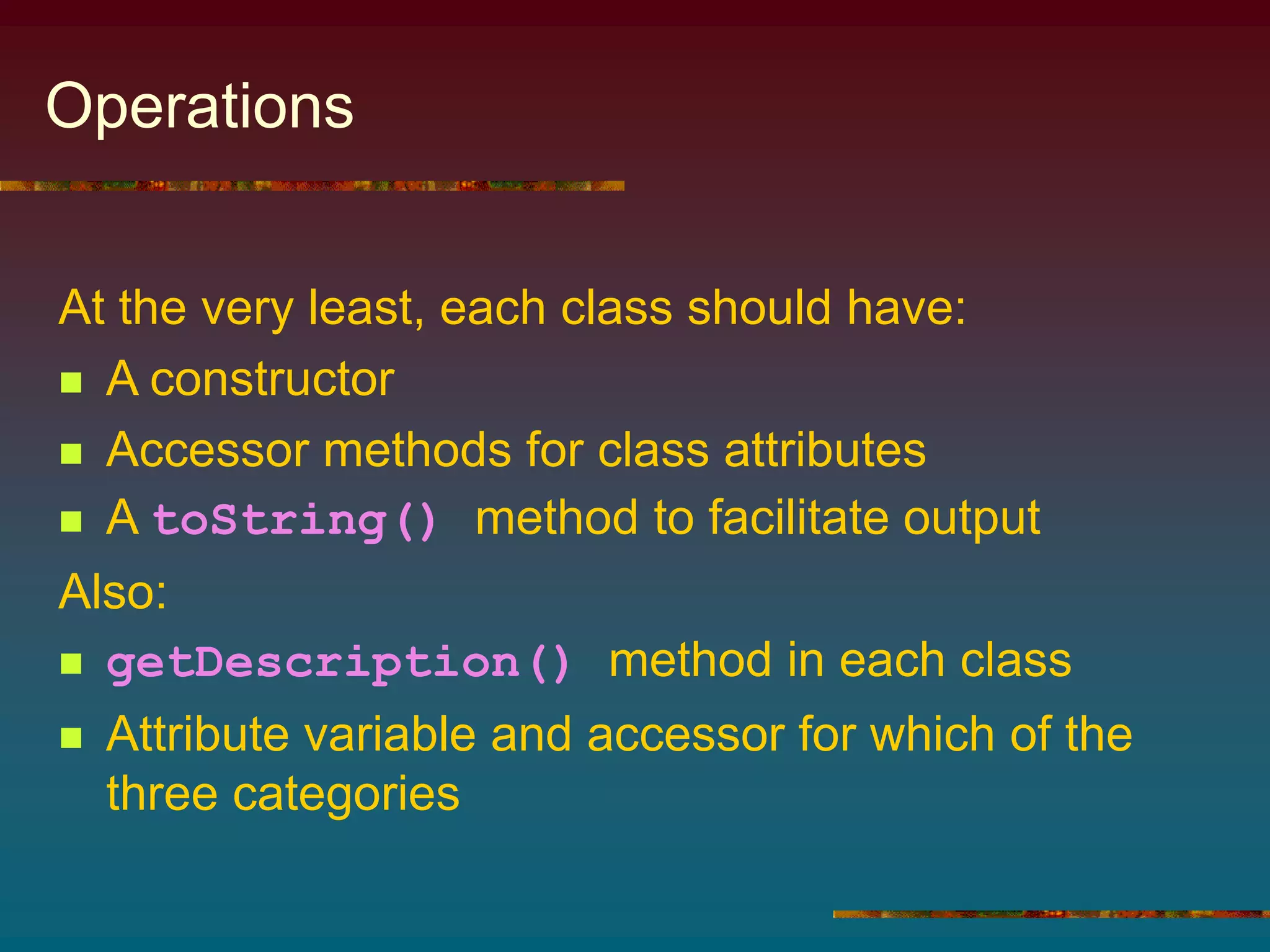


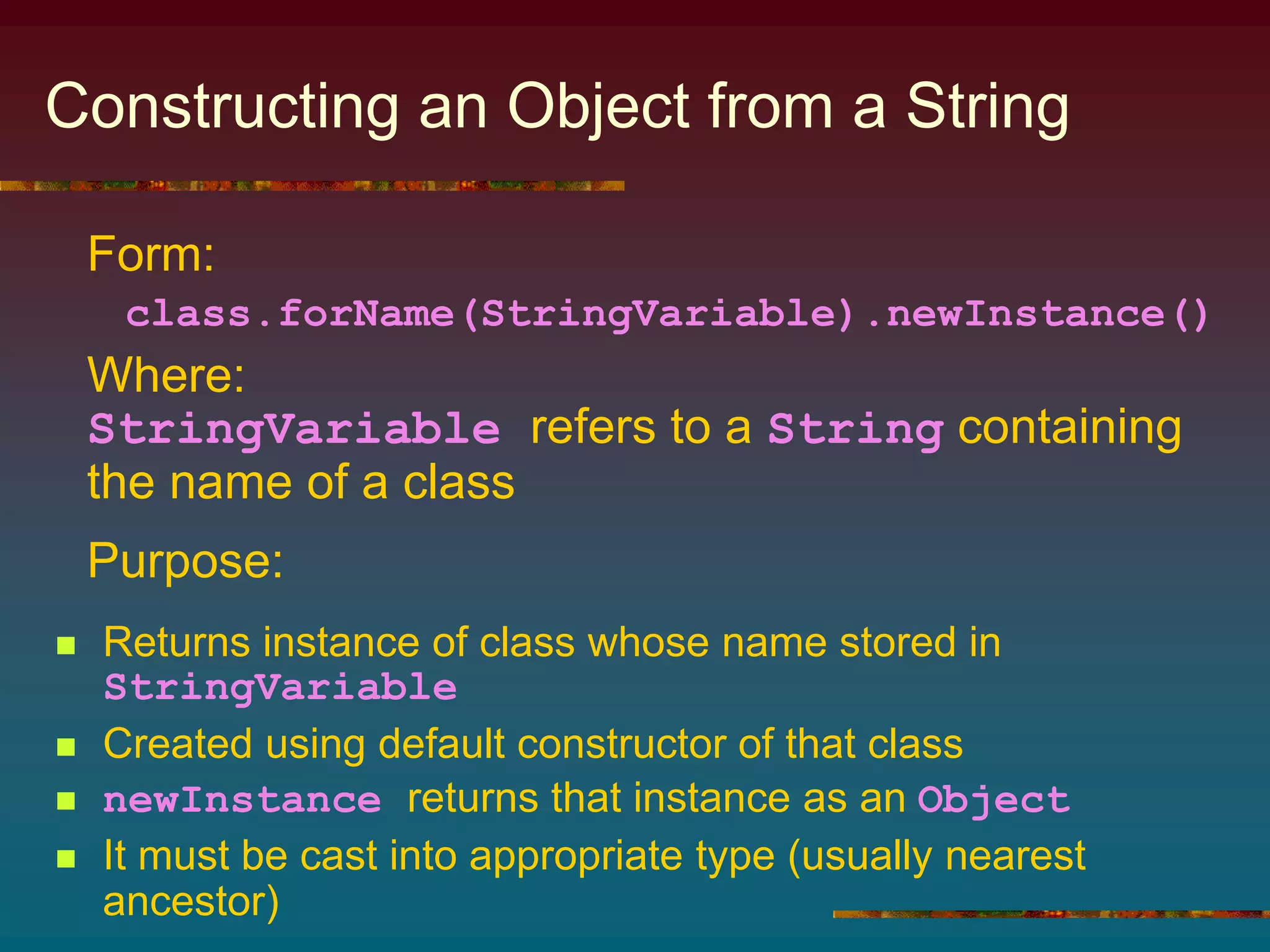

![Objects
Object Type Kind Name
program PayrollGenerator
Employee seq Employee[ ] varying employee
Input file
BufferedReader(
FileReader(
fileName))
varying empFile
File name String varying args[0]
Employee Employee varying employee[i]
Managers Manager varying
. . . . . . . . . . . .
Pay double varying employee[i].pay()
Paycheck Paycheck varying paycheck
Emp. name String varying employee[i].name()](https://image.slidesharecdn.com/chap11-221221052345-295cdaea/75/chap11-ppt-37-2048.jpg)
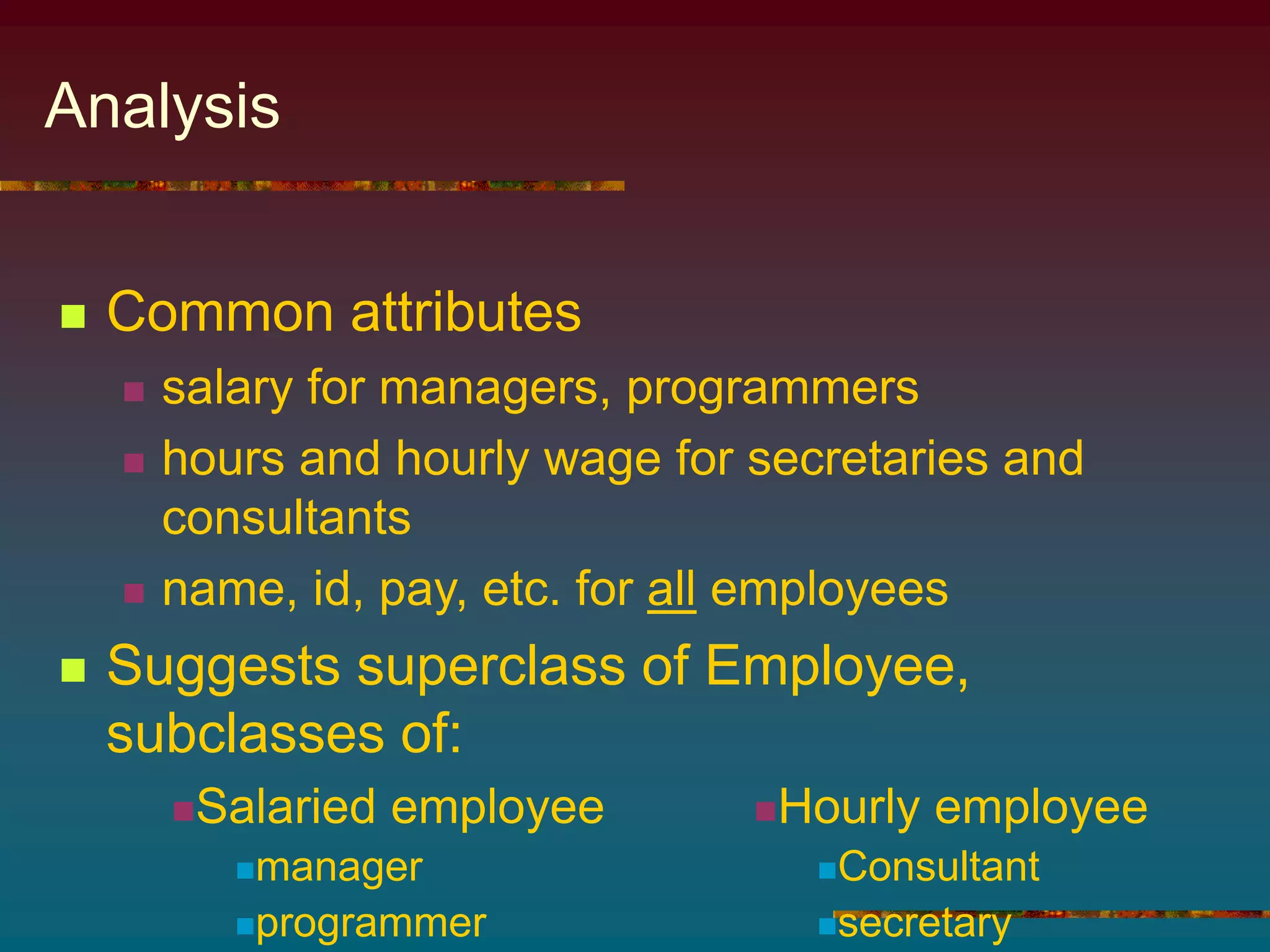

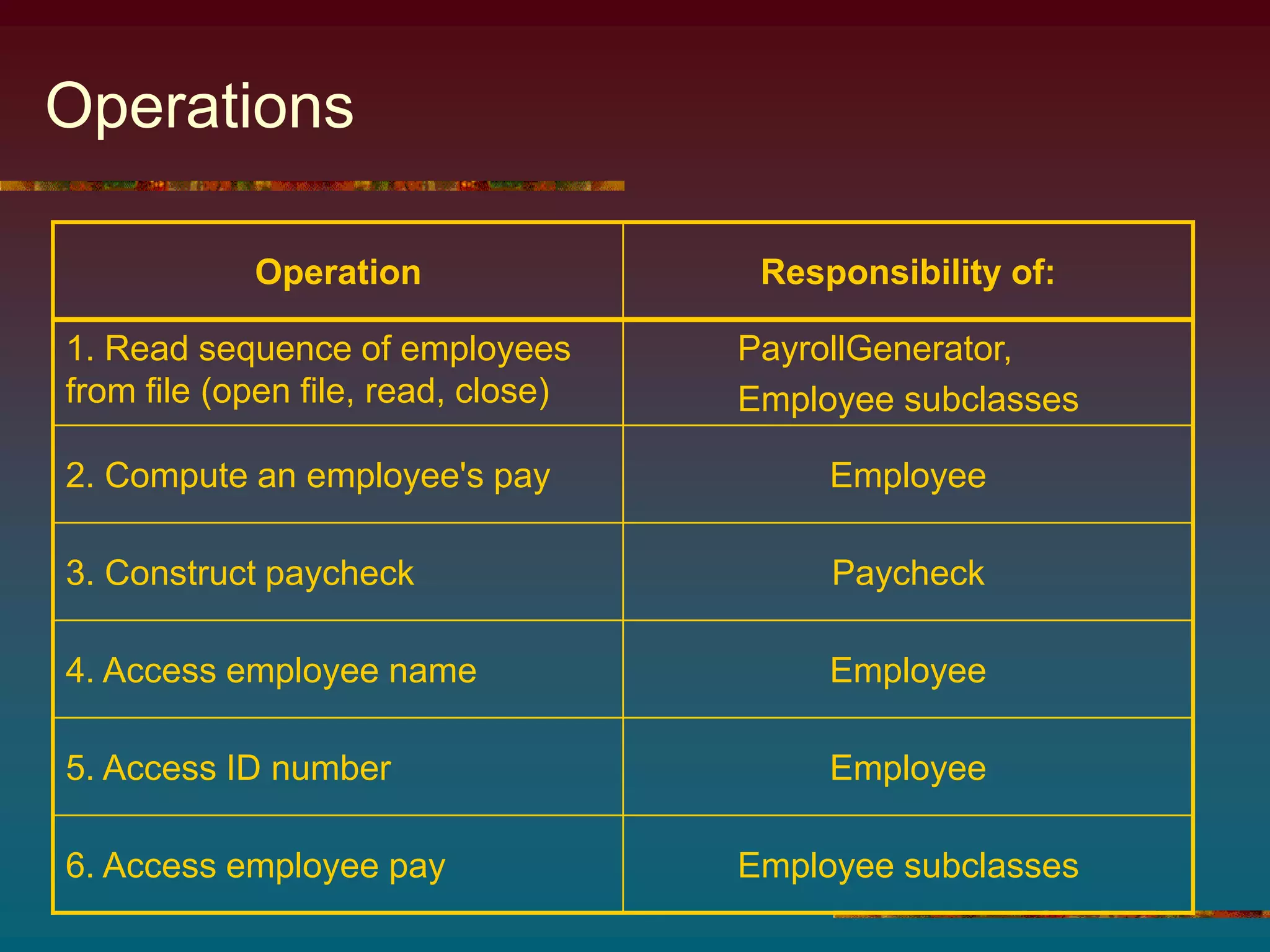
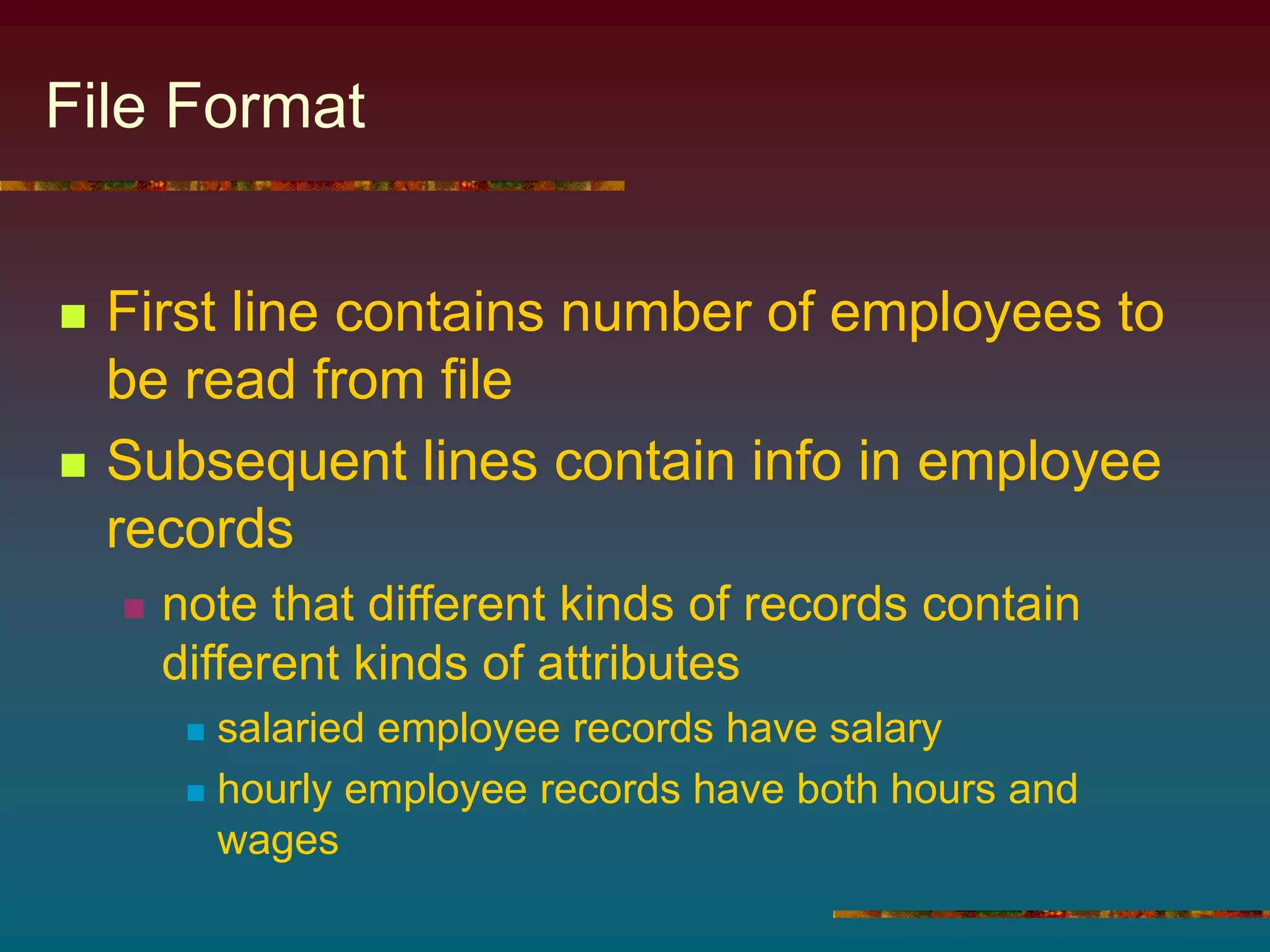
![Algorithm
1. Read the sequence of employee records
from input file into employee array
2. For each index i of employee
a) build a paycheck for employee[i]
b) output that paycheck
Note class declarations, Figures 11.18
through 11.23, PayrollGenerator
program, Figure 11.23](https://image.slidesharecdn.com/chap11-221221052345-295cdaea/75/chap11-ppt-42-2048.jpg)



